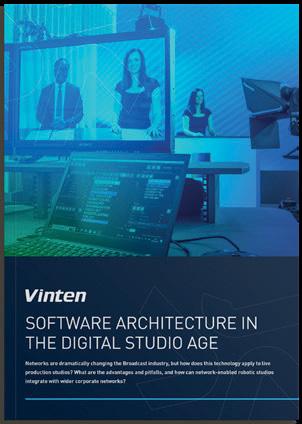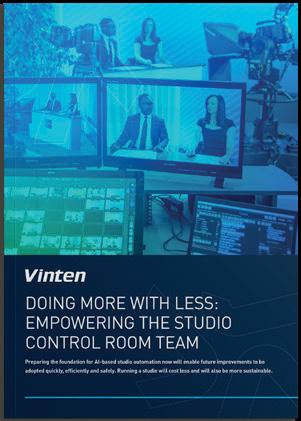BOLSTERING



Industry practitioners discuss broadcast and OTT strategies at BroadcastPro KSA Summit
Managing Director Raz Islam raz.islam@cpitrademedia.com
+971 (0) 4 375 5471
Managing Partner Vijaya Cherian vijaya.cherian@cpitrademedia.com
+971 (0) 55 105 3787
Director of Finance & Business Operations Shiyas Kareem shiyas.kareem@cpitrademedia.com
+971 (0) 4 375 5474
Editor Vijaya Cherian vijaya.cherian@cpitrademedia.com
+971 (0) 55 105 3787
Sub Editor Aelred Doyle
Group Sales Director Sandip Virk sandip.virk@cpitrademedia.com
+971 (0) 50 929 1845 / +44 (0) 7516 993 862
Art Director Simon Cobon simon.cobon@cpitrademedia.com
Designer Percival Manalaysay percival.manalaysay@cpitrademedia.com
Photographer Maksym Poriechkin maksym.poriechkin@cpitrademedia.com
Events Executive Priyanka Raina priyanka.raina@cpitrademedia.com
Data & Production Manager
Phinson Mathew George phinson.george@cpitrademedia.com
Web Developer Abdul Baeis abdul.baeis@cpitrademedia.com
Web Developer Umair Khan umair.khan@cpitrademedia.com
Dominic De Sousa (1959-2015)
Published by
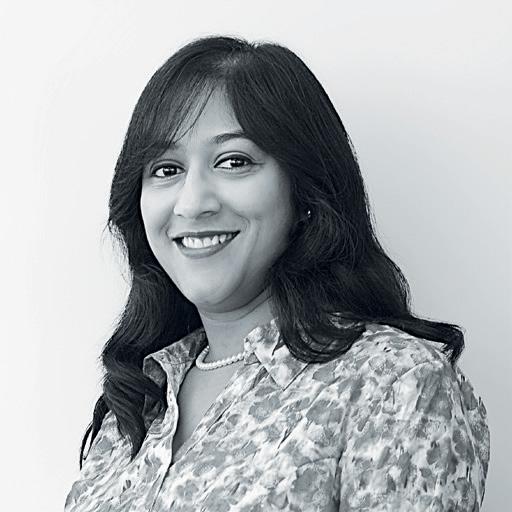
Last year, the Cambridge Dictionary declared ‘hallucinate’ the word of the year owing to the new connotations it had taken on with the rapid uptake of AI across different sectors. Al has become an integral part of our corporate life. The media and entertainment industry has particularly employed AI for subtitling and instant transcriptions, with face and audio recognition cutting down the time used for this drastically while also being cost-effective.
But on occasion, users have encountered false or misleading information generated by AI, and these mistakes crop up more often in regions like the Middle East because the AI models we have at present are all trained on datasets largely dependent on Western sources and the English language. As a result, several biases have crept into the AI models. Termed AI hallucinations, these errors have become a challenge for media companies in the Middle East and Frederic Petitpont, co-founder and CTO of Moments Lab, formerly Newsbridge, has addressed this quite aptly in this month’s issue of BroadcastPro ME
With AI reshaping our world all the way from content creation to delivery, it is critical that we understand it more in-depth. And what better place to discover this than at NAB Show, which is just around the corner. There will be extensive discussions on the tech advancements, opportunities and challenges around AI at NAB. You may also want to attend the new Main Stage discussion on AI in Media and Entertainment at the show, which will bring together some high-profile market majors to discuss their approaches to AI, including the merits and pitfalls of its ongoing and expanded use in production and development. There will be a whopping 120 sessions on AI at this year’s show from April 13-17. See you in Vegas.
 VIJAYA CHERIAN, EDITORIAL DIRECTOR
VIJAYA CHERIAN, EDITORIAL DIRECTOR


UPDATE
NEWS
Azam Media launches OB truck; Quickplay partners with STC to launch short-form video platform; AdArabia partners with Rotana; Asharq News introduces AI anchors; Arab media experts launch consultancy to service MENA region; and more
The broadcast industry is rapidly shifting from traditional to digital media, highlighting the need for future-proof infrastructure. This was the central theme of the tech panel discussion at the BroadcastPro KSA Summit

32
OTT SPECIAL
TOD, beIN Media Group’s OTT platform, recently expanded its entertainment production with the release of Zaman AlAjaj this Ramadan. Mia Edde, VP Original Content at beIN Media Group, tells BroadcastPro ME about the production and the network’s entertainment offering for the Holy Month
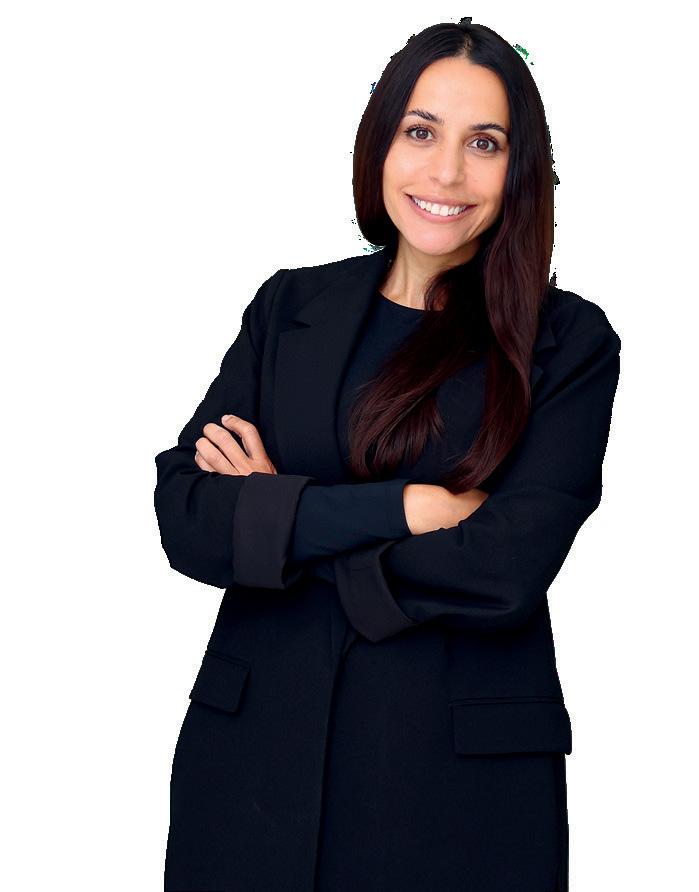

16
Bahrain’s Ministry of Information recently went live with an IP-based multi-channel playout system, setting a precedent as the first government entity in the GCC to implement the technology.
Egyptian filmmaker Tarek Nasr, the creative force behind The Giza Killer on Shahid, opens up to about his content journey and the challenges of staying relevant in a new digital landscape
THE FUTURE OF OTT IN MENA Regional experts discussed personalised content strategies, diverse monetisation models and cutting-edge technologies driving the OTT landscape in the MENA region at the BroadcastPro KSA summit
26

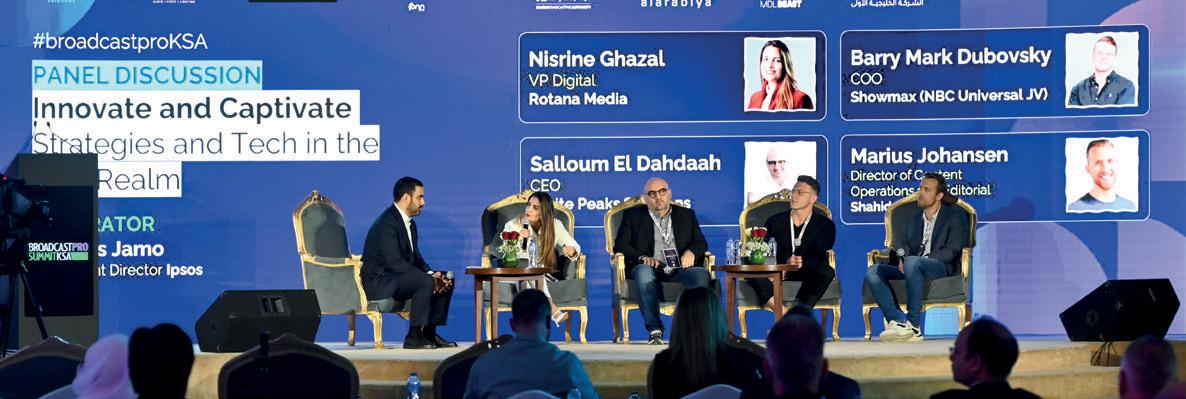

SATELLITE

FILM
Goodbye Julia nabs award at Sonoma International Film Festival

COMMS
Nokia and Batelco to offer 5G private wireless

TV
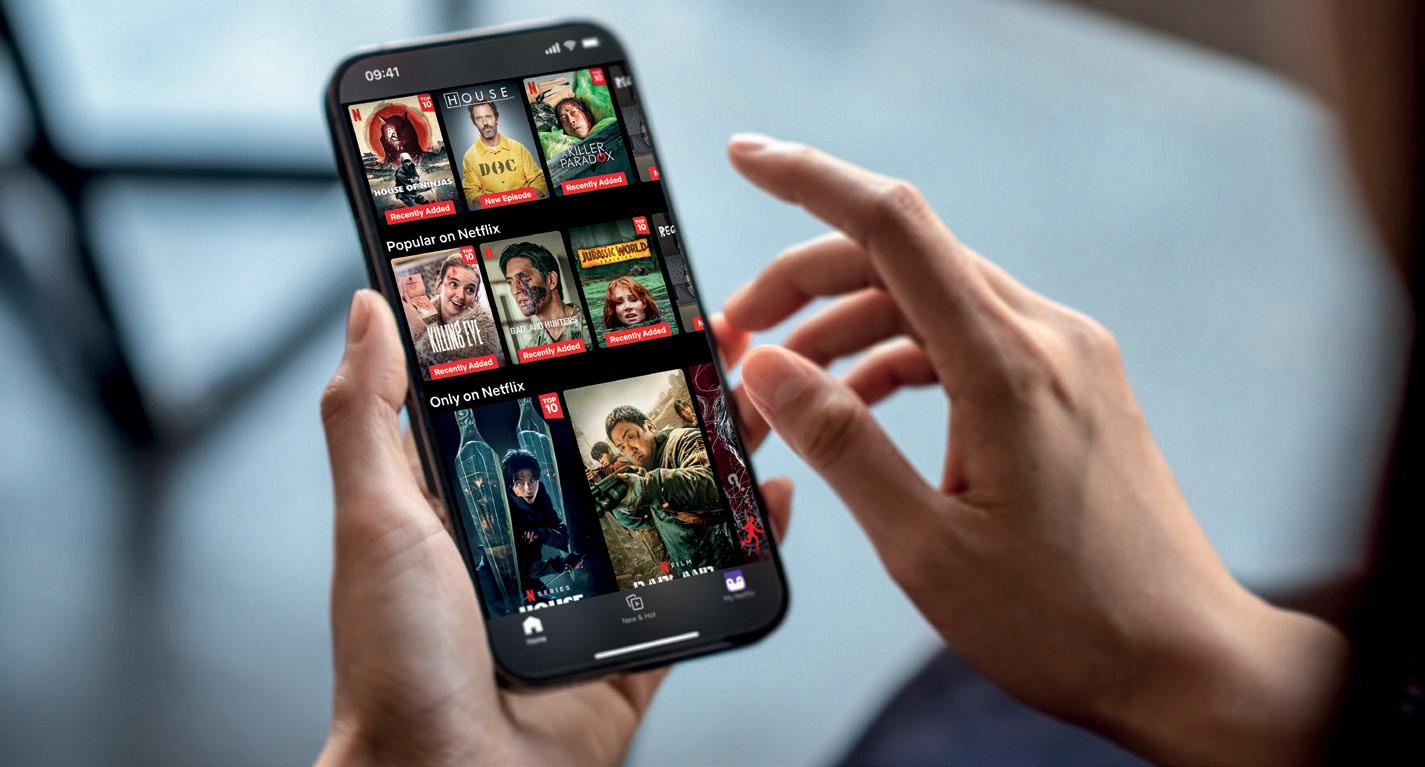
TECHNOLOGY: Broadcast 2.0: A call to action for the digital age

TRENDS: What to expect in 2024 – Prediction II

TV

OPINION: Digital platforms have left the door open for broadcasters
Let’s create a vibrant online broadcast community!
@BroadcastProME www.facebook.com/BroadcastProME BroadcastProME
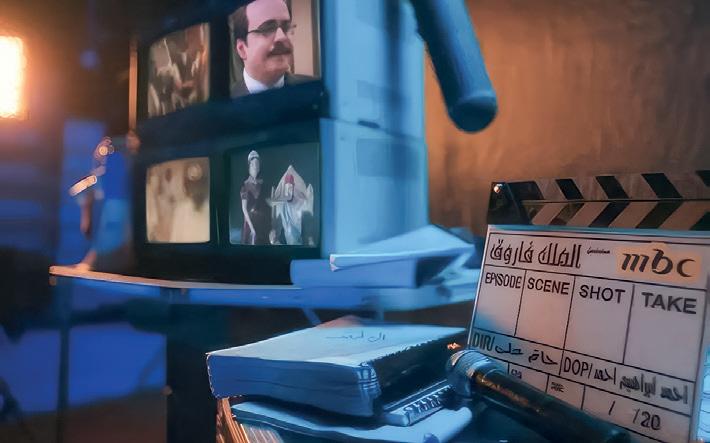
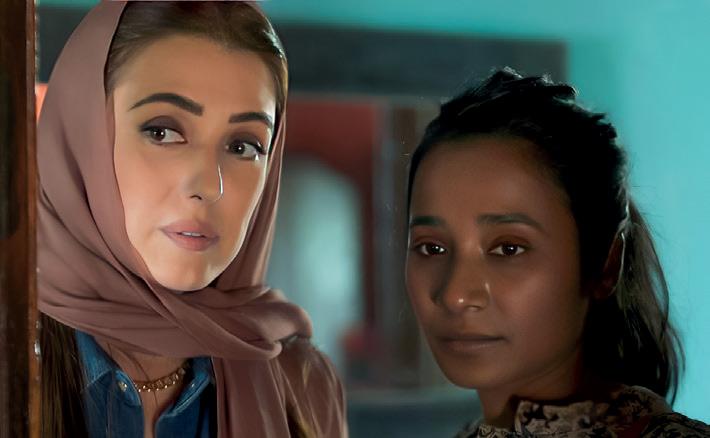

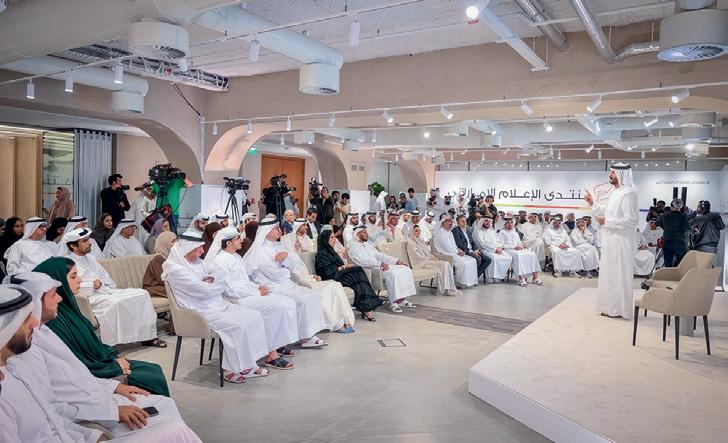

TV
MBC Group acquires 13.7% stake in Anghami
This partnership will enable Anghami to access MBC’s extensive distribution network and potential collaborations for original content
FILM
OSN’s first feature film Yellow Bus wins Global Vision Award at Cinquest Film Festival
The OSN Original is a fictionalised story of a six-year-old South Asian schoolgirl who falls asleep on a school bus and ultimately dies

TV
BBC News Persian celebrates Nowruz with special TV programme
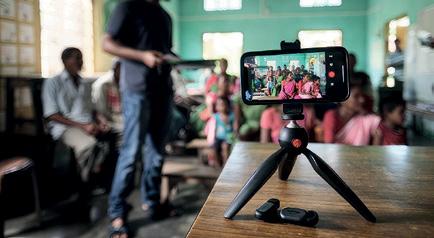
PRODUCTS
Shure introduces newest line of wireless clip-on microphones
OTT
Disney+ EMEA unveils slate of EMEA Original titles
The shows were unveiled on the second day of Series Mania Forum in Lille

SATELLITE
Royal Jordanian Airlines selects Viasat to bring Wi-Fi to fleet
NEWS
Dubai Press Club organises ninth edition of Emirati Media Forum
The forum brought together Emirati media personalities, heads of UAE media organisation, and leading columnists, writers and intellectuals
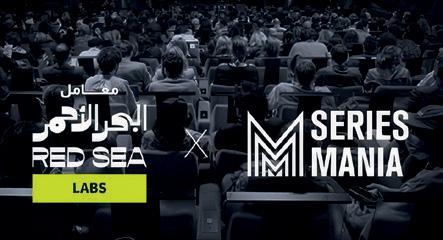
FILM
Red Sea Labs showcases six Series Lab projects at Series Mania
TV
BeIN Sports to broadcast UEFA Women’s Champions League on free-to-air
The announcement marks the fourth successive year that beIN is providing free-to-air coverage of the UWCL
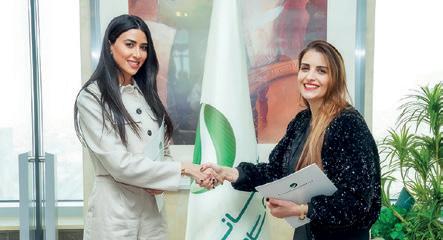
NEWS
Digital media sales representative AdArabia announces official launch



Azam Media, a direct broadcast satellite service in East Africa, has taken delivery of an OB truck developed in partnership with Broadcast Solutions and Lawo. This will enable it to deliver better sports broadcasting experiences across the region.
The OB truck boasts a comprehensive solution tailored to the company’s expanding portfolio of sporting events, particularly football matches, not only in Tanzania but also in

neighbouring Kenya. At the heart of its audio control room is the Lawo mc²36 All-in-One console. With a set-up of 12 Sony cameras, two additional Dreamchip mini cameras and a Ross
vision mixer, Azam Media’s production team is equipped with the tools needed to seamlessly capture all the action. Additionally, the integration of two EVS XTGO replay servers ensures
Quickplay, an OTT video platform known for its focus on personalisation and user engagement, has partnered with Saudi Telecom Company (STC) to introduce Bits, a short-form video content platform that caters to the Saudi audience, aligning with the usage of apps like TikTok in the region.
Leveraging Quickplay’s existing collaboration with
Google Cloud, the initiative aims to deliver digital experiences tailored to Saudi audience preferences. Bits, equipped with advanced AI capabilities, offers enhanced personalisation and recommendations, ensuring a seamless user experience by offering relevant usergenerated content. This approach opens new avenues for brands and
advertisers to connect with their target audience effectively. Badr Almanshould, Head of STC Play, said: “The combination of Quickplay’s platform and digital transformation expertise and the power of Google Cloud is helping us take our content offerings to new heights that will drive audience engagement and satisfaction.”
swift and efficient replay capabilities, enhancing the viewer experience.
Lawo’s VSM (virtual studio manager) IP broadcast control and workflow solution is the backbone of the OB truck’s broadcast control system. Offering versatility and automation, it integrates with a wide array of broadcast equipment, providing Azam Media with the flexibility to customise workflows to meet the demands of any production scenario.
AdArabia, a digital media sales representative dedicated to premium video across Hbbtv, CTV, OTT and OLV, has tied with Rotana TV Network to help the media house transition its traditional linear TV channels to digital platforms. The outfit is fronted by founder and CEO Nisrine Ghazal.
Asharq News has introduced a solution that integrates AI anchors that can speak in multiple languages on air. During the evening show Colours of the East, it debuted its inaugural AI-generated look-alike of the programme anchor, Hadil Eleyan. The AI anchor presented the technology segment fluently in multiple languages including Russian, Spanish and Mandarin.
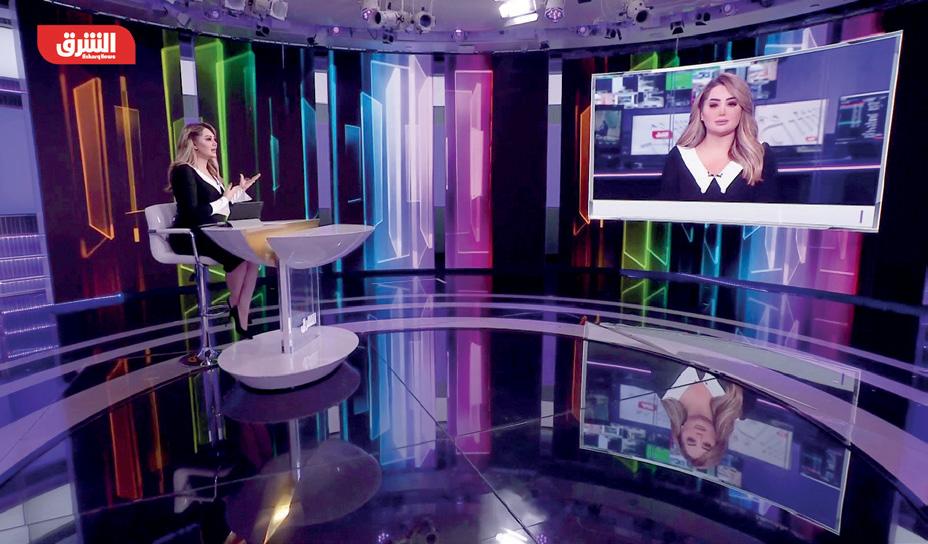
Nabeel Alkhatib, GM of Asharq News, emphasised that AI anchors are instrumental in enhancing efficiency and creativity within editorial processes.
Steven Cheak, Director of Creative Services at Asharq News, said: “AI is meant to augment human productivity rather than replace it. The symbiotic relationship
1001, a major Iraqi streaming platform, has teamed up with Supercell, one of Iraq’s prominent internet service providers. This deal aims to provide legal access to a plethora of entertainment options offered by 1001, which offers content in multiple languages with translation and
audio management features for all viewers. Beyond entertainment, it also aims to deliver educational content reflecting the diversity of human experiences. This endeavour is reinforced by other recent partnerships that 1001 has forged with regional platforms such as StarzPlay, Rotana and OSN+.
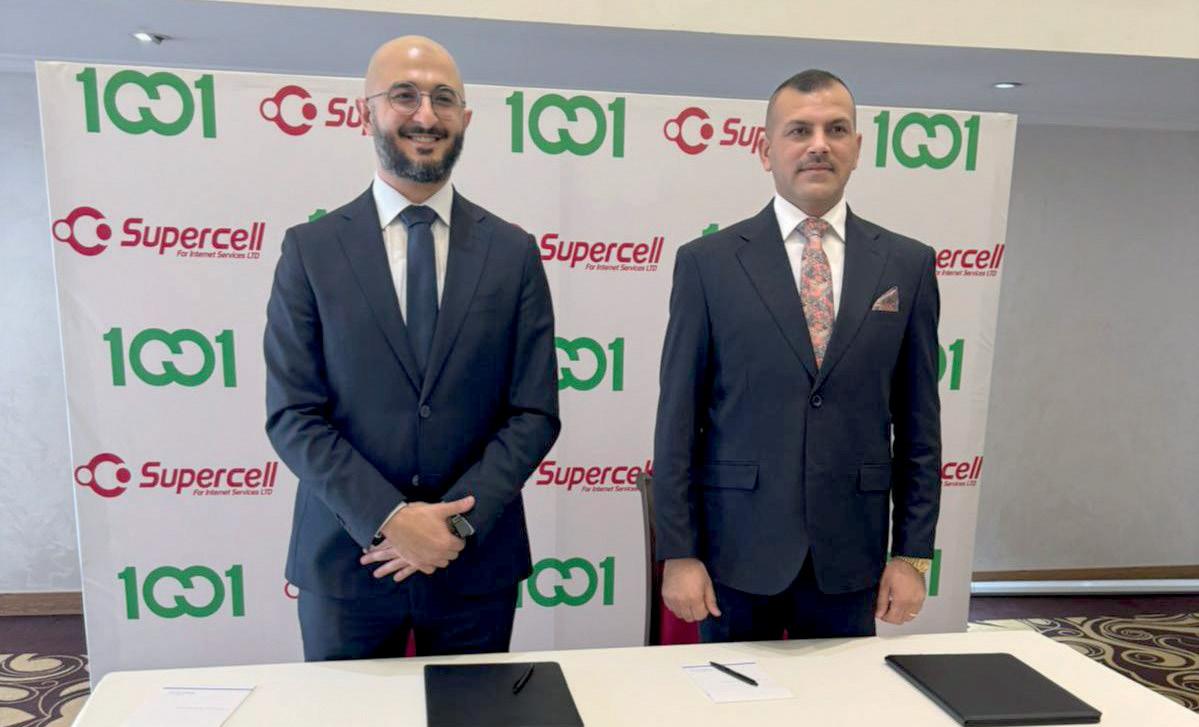
between artificial intelligence and human ingenuity is a cornerstone of Asharq News’ commitment to innovation.”
Asharq News is equipped with the latest graphics, augmented reality and virtual reality systems, enhancing its visual storytelling capabilities. The motiontracking system employed by the network ensures fluidity in displaying visual content, solidifying its position at the forefront of media innovation.
Es’hailSat, a Qatari satellite company, has renewed its partnership with beIN Media Group. The deal entails providing upgraded satellite capacity, uplink services, connectivity and round-the-clock operational support via the Es’hail-2 satellite stationed at the 26⁰ East hotspot covering the MENA region.
These enhanced services are part of Es’hailSat’s expanding product and service portfolio, further strengthening its partnership with beIN.
The deal was signed at beIN’s HQ in Doha, with Ali Ahmed AlKuwari, President and CEO of Es’hailSat, and Mohammad Abdulaziz Al-Subaie, CEO of beIN MENA.
El Gouna Film Festival (GFF) has announced that its seventh edition is set to take place in the coastal town of El Gouna from October 24 to November 1, 2024. The festival continues to be held under the patronage of El Gouna founder Engineer Samih Sawiris and is presented by Orascom Development.



Reson8 Media, a new creative media services company co-owned by media veterans in the Arab world, has launched a comprehensive suite of solutions designed to transform content creation and elevate storytelling across broadcast and media
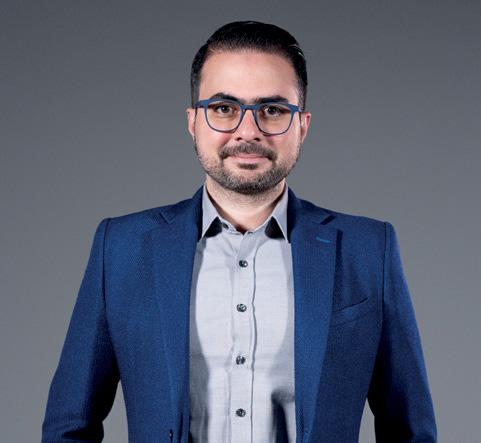
platforms. With a leadership team with extensive experience in the Arab world with regard to broadcast business transformation and media creation, it aims to merge creativity and functionality to craft narratives that resonate
The entertainment landscape is experiencing a major shift in consumer demand with non-English content taking centre stage, according to new research from Rise Studios in partnership with Parrot Analytics. The findings reveal an increasing desire for Asian-language TV and Arabic-language content, highlighting fertile ground for global and regional content producers.
According to the findings, the surge in demand for non-English content accounted for 40% of global demand in 2023, up from 23% in 2018. In
the MENA region, nonEnglish content dominates over half of the demand, driven by a growing appetite for Chinese, Korean and Japanese language content.
The report identifies drama as the most soughtafter genre. However, there has been a rise in demand for animation content, growing from 6% to 12% in the past five years, appealing to both young and adult audiences. The study also highlights a surge in the desire for Arabiclanguage content, indicating a burgeoning market for homegrown stories.

deeply with global audiences. Key to the team are cofounders Rami Hosni, who is also CEO; Ali Husseini, who is also CTO; and Omar Abdelqader, who is CBO.
Hosni brings more than 16 years of experience in VR/ AR/XR storytelling and
brand development at leading Middle East media organisations. Husseini has over 19 years of experience transforming the broadcast business landscape in leading regional media organisations. Abdelqader spent the last 15 years as a media strategist leading the development of digital platforms and awardwinning shows. Together they bring expertise in brand development, VR/AR/XR, workflow integration and content strategy, fostering a culture of innovation and collaboration.
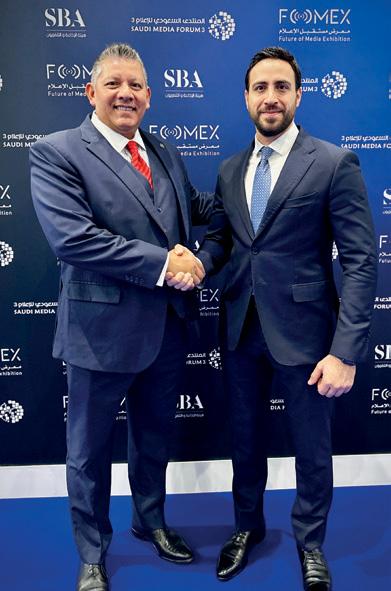
Grass Valley has signed a multi-year, multi-million-dollar agreement with First Gulf Company (FGC) in Saudi Arabia.
Louis Hernandez Jr, Executive Chairman
and CEO of Grass Valley, said: “Our alliance with FGC is a strategic manoeuvre to deliver top-notch, award-winning solutions to the region. Together we’re poised to revolutionise the media landscape with innovations tailored to the needs of leading media and entertainment entities.”
First Gulf Company is an accredited partner for GV’s Agile Media Processing Platform (AMPP).
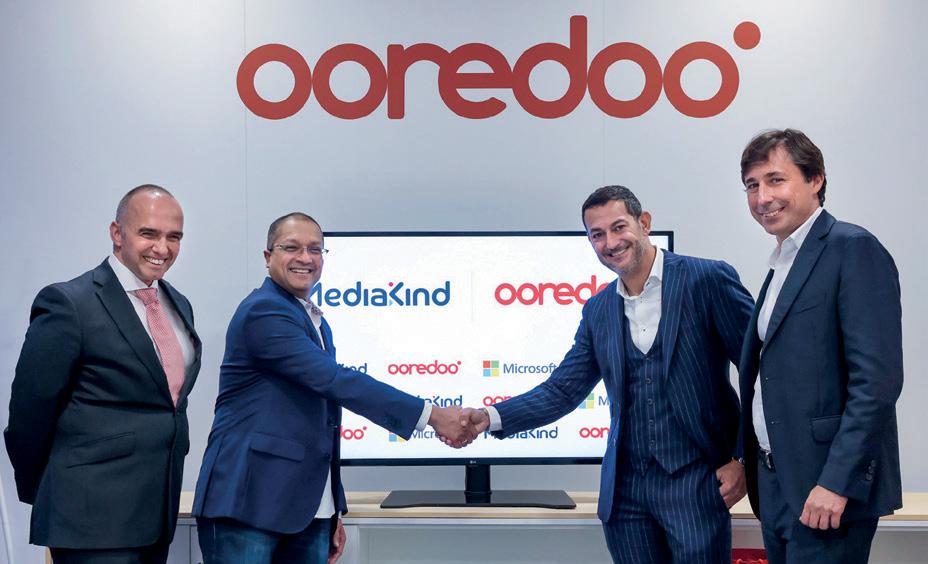
Ooredoo Group has introduced Go Play Market, a streaming platform powered by MediaKind’s technology platform and driven by Microsoft Azure. It offers a diverse array of entertainment options including live TV channels and VOD, sourced from various digital players and content partners
and accessible through a single platform.
The platform has been officially unveiled in six of Ooredoo Group’s markets: Oman, Kuwait, Iraq, Tunisia, Algeria and the Maldives. It caters to both Ooredoo customers and non-Ooredoo subscribers within these markets.
Aziz Aluthman Fakhroo,
Group MD and CEO, Ooredoo, said: “With Go Play Market, our goal is to establish a comprehensive entertainment hub tailored to meet the diverse preferences of our customers, as well as non-Ooredoo subscribers, across multiple markets. Our collaboration with MediaKind and Microsoft to launch Go Play Market marks the first important milestone in our efforts to broaden our offerings and upgrade the entertainment experience for everyone in the markets where this platform is accessible.”
The signing ceremony took place during the Mobile World Congress 2024 in Barcelona.
Evision has joined forces with Cricbuzz to unveil CricbuzzTV. This new venture comprises 24/7 channels showcasing top global cricket competitions and events. The strategic collaboration brings more live cricket action to fans throughout the year, directly on elife, SwitchTV and StarzPlay. Alongside exclusive broadcasts of top global cricket bilaterals and tournaments, it will feature original programming produced by Cricbuzz.
Advanced Media Trading (AMT) has introduced a new showroom spanning 1,000m in Riyadh to strengthen its presence in the KSA market.
The two-floor facility caters to photography, videography, cinema and broadcast equipment enthusiasts. The space includes a showroom and a warehouse on the ground floor and the management office,
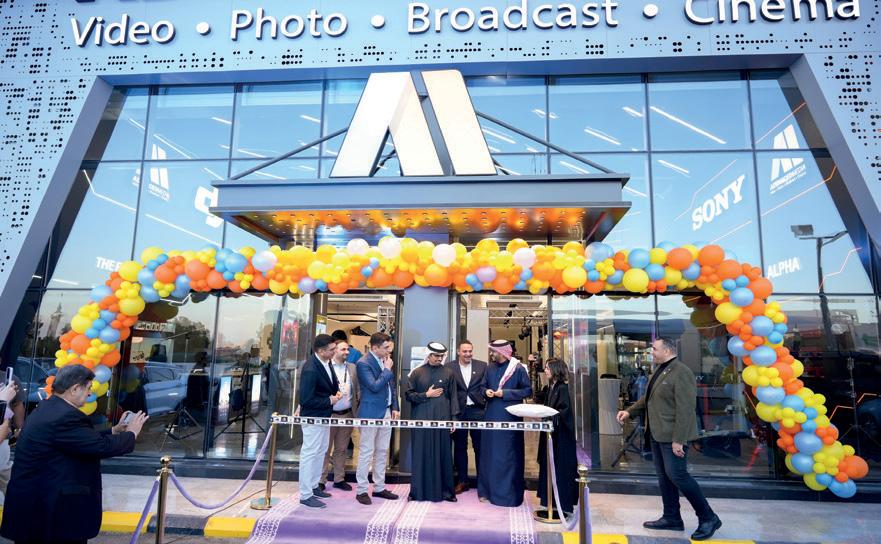
training room and service centre on the second floor.
The showroom showcases the latest
products from over 60 brands including Sony, DJI, Sigma, RED, Fujifilm and Arri. Equipped with interactive displays
and knowledgeable staff, it provides an immersive experience for customers seeking premium photo, video, cinema and broadcast solutions. Additionally, it houses a service centre manned by technicians trained in Japan, Germany, Sweden and Dubai, ensuring expert repairs and maintenance for in-warranty and outof-warranty products.
Prime Vision Studio, a Dubai-based provider of broadcast-quality studio and mobile television content creation services, has invested in Ikegami UHK-X700 4K studio/EFP cameras to bolster its production capabilities. In a statement, Mansoor Meghani, MD of Prime Vision Studio, said: “We are seeing increasing demand for 4K-UHD HDR capability, as it ensures that the resultant productions have a long commercial lifetime even if
In his new role, Mark Gardner will spearhead growth initiatives throughout the EMEA region, collaborating closely with the Executive Leadership Team to assist clients in navigating industry challenges. He aims to leverage Grass Valley’s agile hardware and software solutions to enhance client revenues and drive significant operational efficiencies.
the short-term requirement is for HD SDR transmission. We chose Ikegami UHK-X700 cameras for their ability to integrate easily into studiobased projects, truck-based outside broadcasts or EFP-style mobile content creation. They combine operational versatility with high signal quality and are strongly built to withstand the rigours of outdoor operation.

We were also impressed by the support we received from Ikegami Middle East. Eight UHK-X700 camera systems including a high-frame-rate version have been added to our rental fleet. These will be available for dry hire,
crewed hire or as part of a complete production management service.”
Abdul Ghani, GM, Ikegami Middle East, added: “Prime Vision Studio is a highly respected company with a strong customer base within the UAE and internationally. We are confident that its production team will find the UHK-X700 cameras useful for a wide range of applications.”

NMK has announced significant leadership changes within the NMK Group to fortify its core leadership team, with Alex Kemanes taking the helm as Middle East Regional Director. He will oversee the group’s activities in the region and also assess strategic acquisition
opportunities. He will also assume the role of Managing Director at Midwich Ignite, pioneering Midwich Group PLC’s startup investment division. In this capacity he will formulate and implement investment strategies, cementing the company’s
market position.
Dino Drimakis steps into the role of Director of Strategic Development, tasked with leading NMK’s business development and market expansion efforts in the Middle East and southern Asia. Known for his technical expertise and adeptness in pioneering new markets, he will play a pivotal role in advancing the group’s presence in key territories. His leadership will involve assembling teams and refining product portfolios tailored to each region’s unique requirements.

Advanced Media Trading is a leading distributor of professional video, photo, broadcast and cinema equipment and accessories since its founding in 2002. AMT covers every aspect of the industry from consultancy, training and sales to installation, and service and maintenance.
AMT’s Service Department was established in 2004 to maintain customer satisfaction by providing high-quality after-sales support efficiently. Since 2006, it has grown from two technicians in a small room to 16 highly skilled engineers and technicians in a highly specialised centre located on the 8th Street of Al Quoz Industrial 1 in Dubai.
The AMT Service Centre in Dubai has a space of more than 370sqm, offering repair, maintenance and after-sales support for all the brands the company represents in the region. It has hightech service tools and measurement equipment to perform professional repair and maintenance for in-warranty and out-of-warranty products. It is authorised to provide services and repairs for Sony, DJI, RED, Teradek, Small HD,
ATOMOS, HOLLYLAND, Profoto, SWIT, ASTERA, Godox, Nanlite, Manfrotto, Eartec, Cartoni, Tilta and EasyRig.
Moreover, Advanced Media has also been extending these services to customers in Saudi Arabia since 2019 as the authorised service centre for Sony Broadcast Products, SIGMA lenses, Fujifilm, Profoto and ARRI Lighting, and in Egypt since 2021 as an authorised service centre for Sony Digital Imaging, Sony Creative professional products and SIGMA lenses.
In addition to cameras and lenses, Advanced Media’s Service Team services professional media products, such as cameras, drones, gimbals, tripods, video lighting, monitors, and video and sound equipment. “Our engineers, who are experts in the broadcast and cinema service industry, have been trained inboard and overseas and certified by the manufacturers to provide professional repair and maintenance according to the approved manufacturers’ standards,” says Hani Alafifi (pictured top right), Head of Service at Advanced Media.


The Service Department’s typical turnaround time is 7-10 working days; however, it will be less than five working days for in-warranty and high-priority cases. “Because we understand our customers’ needs, we treat urgent repairs as a high priority and provide all kinds of efforts and support to ensure that our customers continue their projects smoothly,” remarks Alafifi. Customers may schedule an appointment or visit the centre during workings hours.
To ensure high-quality repairs, all repaired equipment is subject to quality check procedures using the recommended tools provided by the manufacturers, such as integrated service systems, modern infinity collimator, resolution charts and 4k lens projector. All parts used for repair are genuine spare parts supplied by the manufacturers. Additionally, all repairs except misuse cases have a 90-day warranty if the same error occurs again. In that case, the case will be handled as a top priority and free of charge. Advanced Media prides itself in having established a network across the MENA region that offers exceptional aftersales support efficiently and effectively to serve the company’s objectives.
TOD, beIN Media Group’s OTT platform, recently expanded its entertainment production with the release of Zaman AlAjaj this Ramadan. Mia Edde, VP Original Content at beIN Media Group, tells BroadcastPro ME about the production and the network’s entertainment offering for the Holy Month
Did this production premiere on beIN and TOD simultaneously?
Zaman AlAjaj debuted on both beIN and TOD on the first day of Ramadan, with TOD enjoying a lead window. We are thrilled to reach this significant milestone and unveil our inaugural original Gulf production, allowing us to craft a story deeply rooted in culture and offering a captivating glimpse into the rich history of the Gulf. In light of this, we are committed to maximising our regional reach to ensure that Zaman AlAjaj resonates with audiences across MENA and Turkey by making it available on TOD and beIN Drama.
What is beIN’s overall vision and strategy with regard to original content initiatives, particularly in the context of the Middle East market?
At beIN and TOD, our overarching objective is to rectify the imbalance where Western shows and content often overshadow local productions. Currently, we are witnessing a transformative shift in global preferences, with a notable increase in demand for non-English content
and narratives. Recent reports indicate that the share of global demand for non-English content surged to 40% in 2023, up from 23% in 2018.
To contribute to this evolving landscape, we are creating original, locally rooted content with narratives that showcase the rich diversity of culture and the profound talent pool in MENA. Our strategic approach revolves around three key pillars: prioritising local narratives, embracing distinctive storytelling and curating a diverse portfolio. We firmly believe in the potential of MENA stories and talents to share the incredible storytelling prowess of the region with a global audience.
Do you have separate productions for the linear and streaming space planned, or will one platform mirror the other?
While TOD Originals will be specifically designed for the streaming format to cater to binge-watching behaviour, the goal is to make this content available across all platforms. This multi-platform strategy ensures maximum reach, allowing viewers to access it in the
way that best suits them, whether it’s through traditional linear TV or on-demand streaming services.
Tell us a bit about this original production.
Zaman AlAjaj delves into themes of love, betrayal and the pursuit of peace. Produced under the direction of Abdullah Boushahri, it is directed by Jasem Al Muhanna and written by Eman Sultan. The story follows the journey of Wijdan (portrayed by Mona Hussein), a woman seeking refuge from her abusive father in a seemingly idyllic village. She infiltrates the village till she gets to the village leader Geith (played by the acclaimed Jassim Al Nabhan) and his brother Hamza (portrayed by the gifted Hussain Almahdi). As the series unfolds, viewers will witness Geith’s attempts to navigate through the conspiracy to ensure justice is restored, all while managing the complex web of relationships and alliances within the village. With its cinematic visuals and stellar cast, including Jassim Al Nabhan, Hussain Almahdi, Mona Hussein, Faisal Alamiri, Eman Al Hussaini, Saoud Boushahri and Abeer Ahmed, Zaman AlAjaj promises to be a mustwatch production, particularly during the auspicious month of Ramadan.
Are there other Originals for this Ramadan?
Yes, we have also launched three cooking shows, all of which are TOD Originals: Bel’afya, Wasfa Saeeda and 30 Days Bel’afya delves into the rich history and heritage of Arabic recipes, hosted by Chef Bader AlShayji. Wasfa Saeeda, led by Chef Sarah El Gendy, aims to infuse joy into your kitchen with a nostalgic journey through Eastern, Arabic and international cuisine, adding twists along the way. Meanwhile, 30 Days with Coach Nemo offers a transformative 30-day exploration of health and



wellness topics, from debunking fitness myths to sharing nutritious recipes.
In addition to our original programming, viewers have access to all our acquired content, including Egyptian Lunchox, Al Arbaji season 2, Nokta Enntaha and Qalam Resas
Our selection also caters to younger audiences with shows like Tijjan Annour season 12, Rise Upon Him and This is Islam season 2. Furthermore, we’ll be streaming exclusive movies and shows like Ferrari, Hunger Games, A Man Called Otto, Shazam, to name a few.
Is it a Khaleeji production or a pan-Arab production?
Where was it filmed?
Zaman AlAjaj is a Gulf production of 30 episodes and each episode is roughly 45 minutes long. The series was filmed in Kuwait.
Are there plans to expand your original content offerings beyond Ramadan, and if so, what types of content or themes can we expect to see in the future?
Indeed, our plans extend far beyond
Ramadan and expanding our original content offerings is a top priority for us. Commissioning any project involves forging partnerships with creators, writers, showrunners and directors to craft compelling content delving into a diverse range of genres. Our aim is to provide thought-provoking narratives from the region to the region. A standout example of this approach was our recent original, Ons Jabuer (This is Me), which made significant waves in the sporting world by shedding light on the mental struggles faced by women in sports.
In addition to our focus on Arabic and local content, we recognise the high demand for Turkish content in the region. We had great success with our last Turkish Original, The Ivy, which garnered a level of viewership surpassing many well-known Western series on our platform.
How do you approach the localisation of your original productions to ensure relevance across diverse audiences within the Arab world?
In just over two years, we have garnered significant traction among viewers
in the MENA region. What sets us apart is our diverse offering, which includes exclusive sports streaming along with a vast library of over 50,000 hours of Turkish, Arabic and Western entertainment. Additionally, we provide a comprehensive selection of live channels such as beIN Sports, beIN entertainment, Arabic kids programming, cooking shows and other channels designed to cater to every member of the family. Recognising the region’s strong emphasis on familyoriented entertainment, we ensure that our programming is culturally sensitive and inclusive, meeting the diverse needs of households.
How have you tried to address the challenge of so many channels vying for eyeballs during Ramadan?
We have targeted all segments – fans and families – and we have thought about everything they might need during Ramadan. This is why we are providing a wide variety of content, from cooking shows to sports to kids content, so that TOD has something of value to offer to all its users.

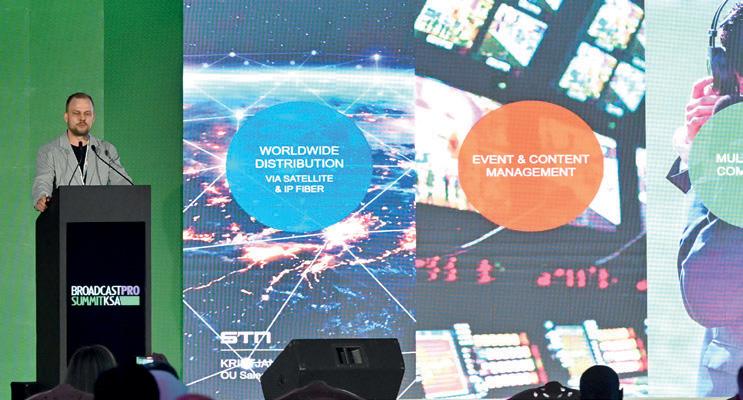



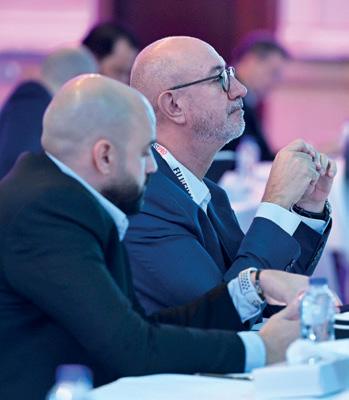





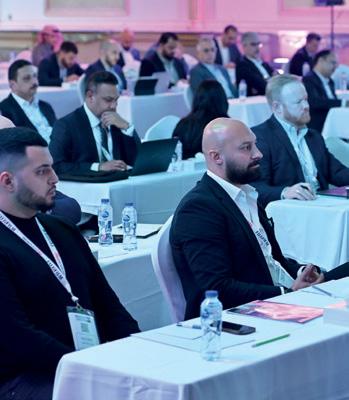
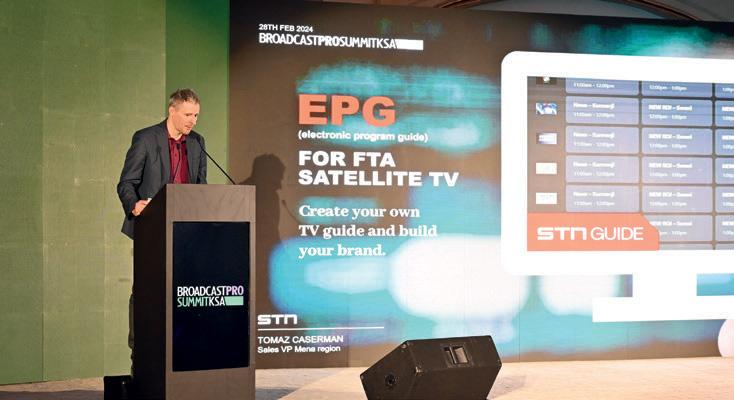
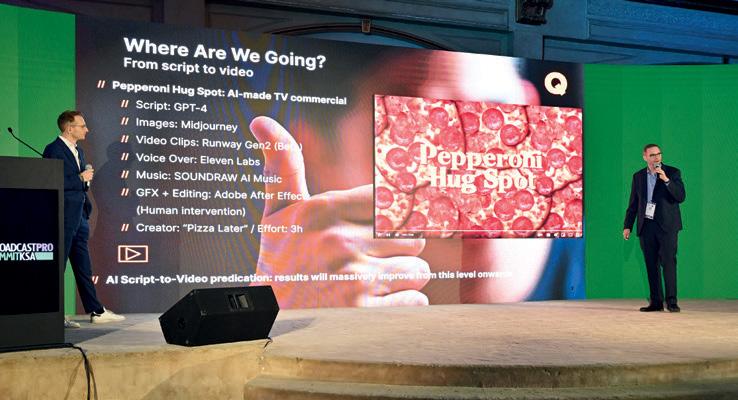
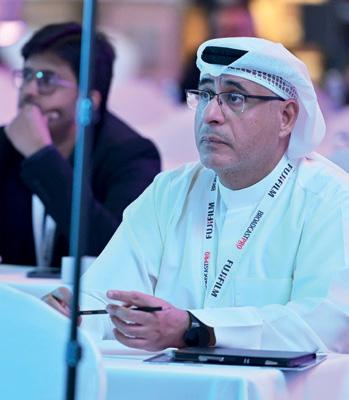
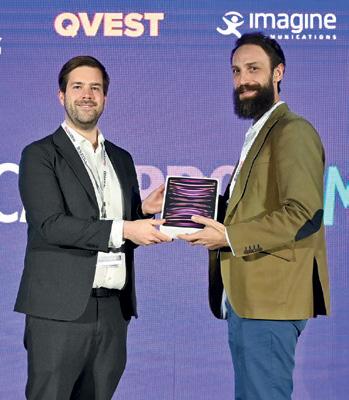
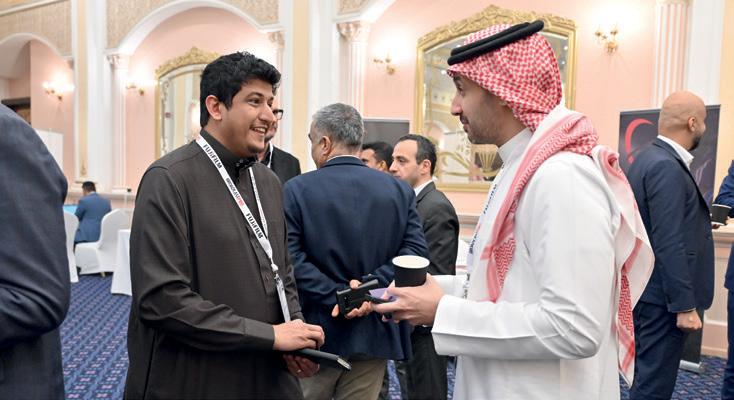



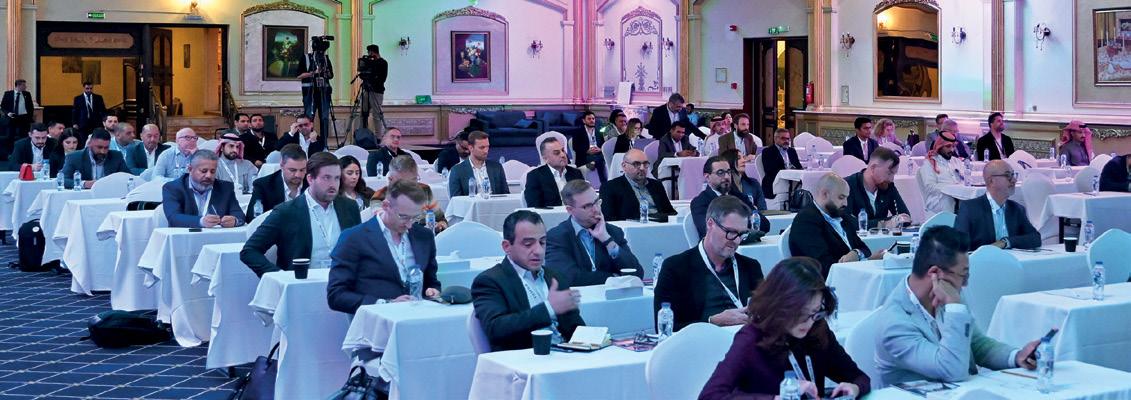

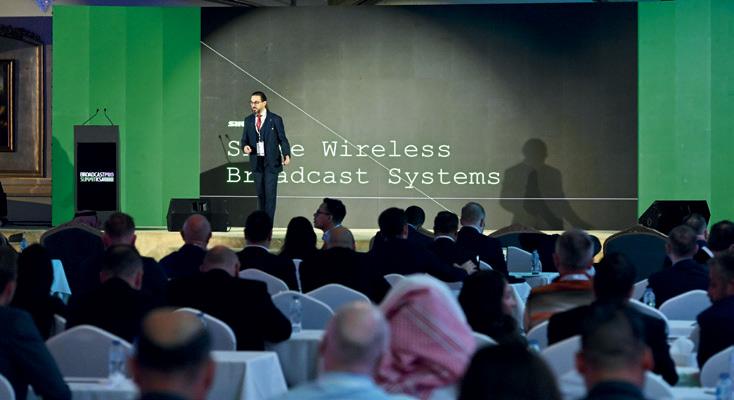


The broadcast industry is undergoing a massive transformation marked by a shift from traditional television and radio to digital media and online streaming platforms. Amidst the continuous influx of new tech and trends, it has become imperative to build future-proof infrastructure.
This was the central theme of the tech panel discussion at the inaugural BroadcastPro ME Summit KSA held last month in Riyadh

Moderated by Sammer Elia, Sales and Business Development Director – MENA, Viaccess-Orca, the panel featured insights from Hejar Berenji, CTO, Rudaw Media Network; Aus Alzubaidi, CISO, Director of IT & Media, MBC Group; and Philipp Glänzel, GM – CTO, Qvest MENA.
At the outset, Elia underscored the importance of factors such as costs, virtualisation, convergence, AI, regulations and audience preferences for media houses and outlets when looking at building a sustainable production and delivery platform. Notably, the past year witnessed substantial investments by some of the region’s media houses in futureproofing their technology stacks. In light of this, Elia asked the panellists about their primary investments in 2023 and their forward-looking plans for 2024 with regard to futuristic tech-stack implementations.
Philipp Glänzel from Qvest MENA pointed out that in 2023 most of its customers had invested in IP-based infrastructure such as IP2110, as well as computer infrastructure. “Virtualisation, hybrid set-ups and cloud deployments are some of
the areas that our customers are investing in. The underlying goals are to bring down production costs, enhance flexibility and be more accommodating of the requirements that the company’s editorial teams get from their customers.”
For Rudaw Media Network, the latest tech stacks and their implementation are at the top of the company’s to-do list as it prepares to move to a new location.
“We are moving to a greenfield and this gives us a chance to rebuild everything from ground zero. For us, 2023 was the year of adapting to all the latest eras of media, including AI, Chat GPT, cybersecurity threats and IP implementations,” explained Hejar Berenji.
The network aims to move to the new facility by the end of 2024, where it will embrace “technology that will be used for the first time by a news organisation”, he added enthusiastically. “It’s a huge opportunity where we can adopt all the new trends such as AI and visualisation and prepare for newer ways of approaching our audience in MENA. The region has a different way of looking at media, especially the news, so we have to develop a unique approach. We are actively working with our partners and other stakeholders in the region to equip them with the knowledge and techniques that work for our region and audience. It’s high time we stopped imitating foreign brands.”
Engaging with customers on social platforms, rather than just the traditional linear way, has become increasingly important PHILIPP GLÄNZEL, GM – CTO, QVEST MENA
According to Aus Alzubaidi, 2023 marked the year of ChatGPT’s launch and the widespread adoption of generative AI large language models. It was also a significant year for MBC Group, achieving two new milestones: relocating its headquarters from the UAE to Saudi Arabia and becoming a publicly listed company on the Saudi Exchange, Tadawul.
“We dedicated a few months to experimenting with a handful of generative AI use cases to determine what works and what is relevant to our industry. We debated starting with chatbots or ‘Talk with PDFs’, then moving on to more advanced use cases involving computer vision and content moderation. 2023 was a year of experimentation, and in 2024 we aim to realise some of


these production use cases,” he explained. He also emphasised that cybersecurity has been one of the company’s main focus points over the past few years.
The past few years have also seen social media platforms continuing to reign as champions in audience engagement, pushing the region’s media houses to devise and employ robust integration strategies.
“Engaging with customers on social
platforms, rather than just the traditional linear way, has become increasingly important. The key driver is to have a technology stack that allows you to easily integrate into these environments while remaining flexible. With the social media landscape constantly changing, it also helps to be an early adopter,” said Glänzel. He further noted that while established platforms such as
Facebook, YouTube and X (formerly Twitter) continue to boom, more localised and niche platforms such as Periscope are also gaining popularity. “All these platforms come with different APIs and there is an editorial demand to be present on all of them. If a media house can integrate with these platforms quickly, that becomes a key differentiator.”
At this point of the discussion, Elia highlighted the emergence of


editorial apps for field reporters and user-generated data, for which the implementation of crossmedia backends that can facilitate customised workflows incorporating legacy feeds has become essential. He queried about the ease of deploying such frameworks, which are predominantly available as SaaS solutions through hyperscalers, while adhering to cybersecurity guidelines. “There is a need to put governance around how these tools are being used. There are a lot of tools available and if we allow all of them to be used equally, it becomes increasingly complicated to manage them from a cybersecurity and content governance perspective. Businesses have to maintain systems that allow them to integrate all of these different tools while maintaining cybersecurity and editorial approval processes,” stressed Glänzel.
While such models enable scalability, it is challenging to deploy adapted workflows within the boundaries of cybersecurity guidelines. As Alzubaidi noted, “It is not easy at all. Most regional broadcasters have on-premise
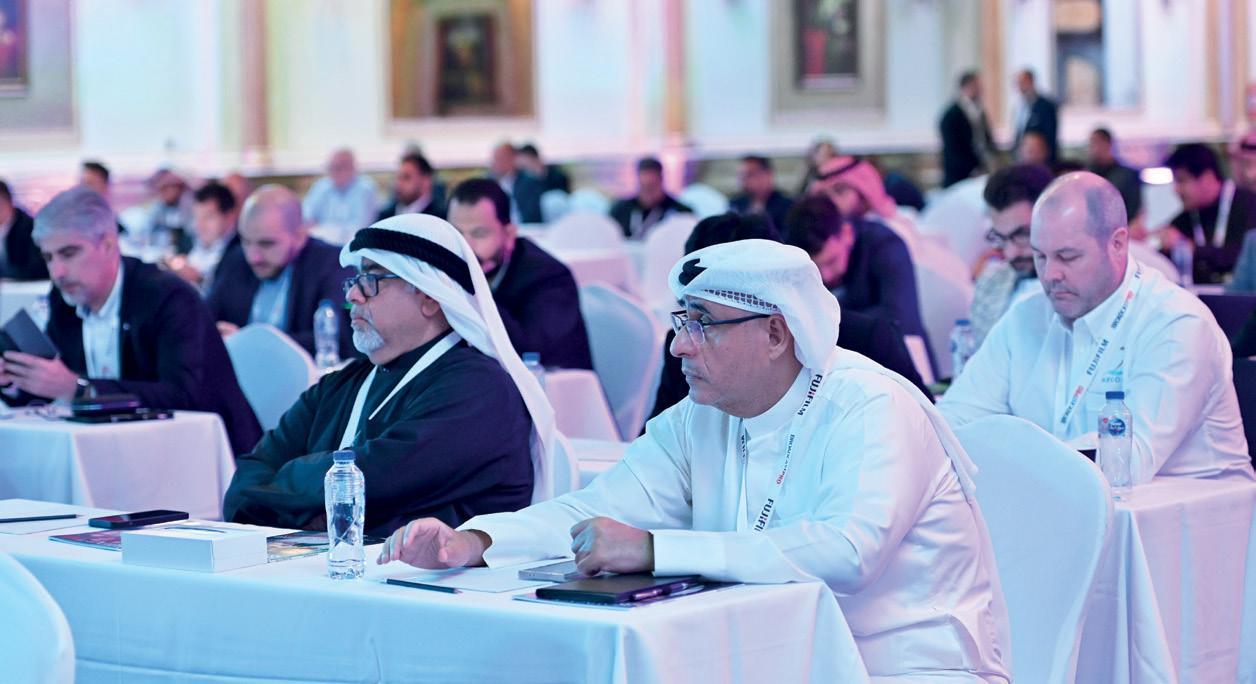
2023 was a year of experimentation, and in 2024 we aim to realise some of these production use cases
AUS ALZUBAIDI, CISO, DIRECTOR OF IT & MEDIA, MBC GROUP
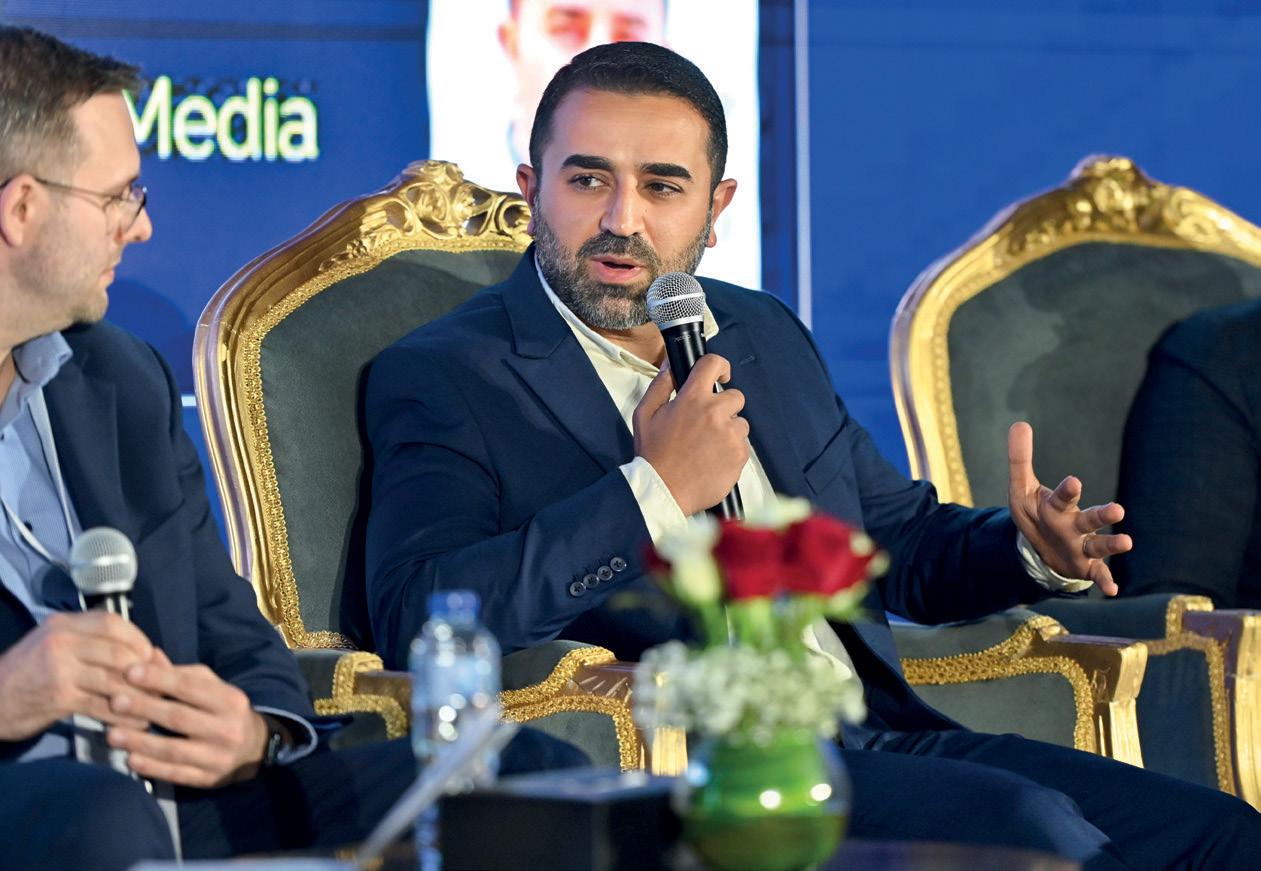
infrastructure, which means they first have to digitise their videotapes, go virtual and then move to the cloud. But having a cloud-first strategy may not necessarily be the smart thing to do. After years of trial and error, we realised that a hybrid multi-cloud approach is the best.
“Only a hybrid set-up can address drawbacks such as the risk of monopoly from broadcasters storing all their assets with a single cloud provider, adherence to strict content moderation compliance guidelines, and the integration of emerging technologies such as Dolby Atmos 4K editing. It can also circumvent restrictions that some providers impose on virtualisation and hosting the operating system in the cloud.”
The demand for hybrid implementation and workflows, coupled with the demand to access systems securely from literally anywhere, have made MAM (media asset management) critical in facilitating seamless workflows. To illustrate this point, Berenji cited the example of the news sector, where there is no time for extensive post-production processes.
“Whatever comes from the field needs to go to the audience as soon as possible, and MAM plays a huge role
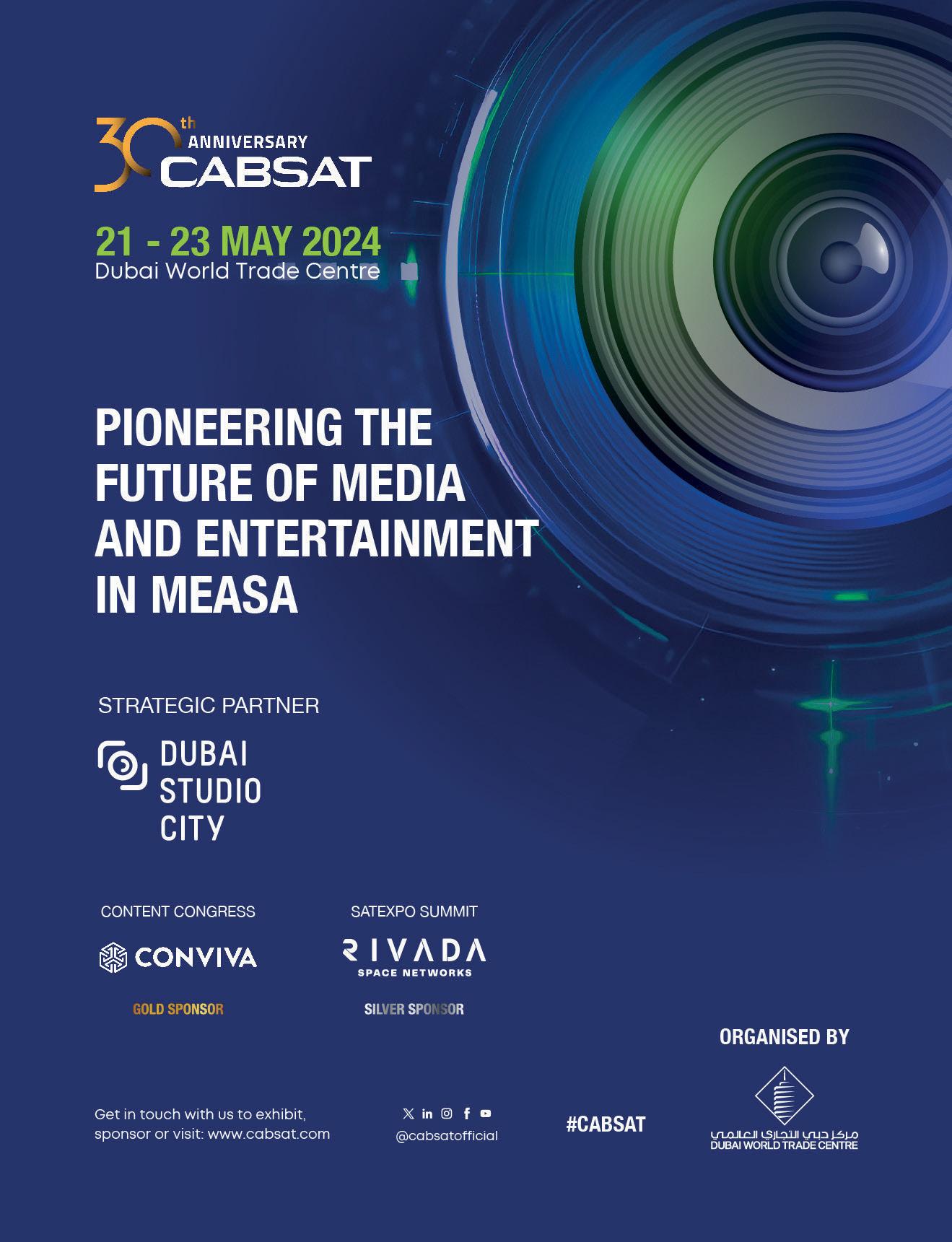

in facilitating this. Whether it’s sifting deepfakes from actual news, giving journalists, content creators and CEng teams access to information across platforms and enabling them to showcase that information in the format they want (for TV, radio or digital), MAM is very crucial,” he said.
Another benefit of MAM is that it allows users to browse through archives quickly. This is especially important for news networks, where accessing the right archive as soon as possible is key to building credibility and audience engagement.
Alzubaidi was quick to point out that while having MAM is critical, having it on-premise is a completely different experience from having it in the cloud. “MAM on the cloud gives users real-time access to archives and allows them to enrich metadata
There are a lot of tools available and if we allow all of them to be used equally, it becomes increasingly complicated to manage them from a cybersecurity and content governance perspective
PHILIPP GLÄNZEL, GM – CTO, QVEST MENA
on the fly, but the costs are always a concern. It is very expensive to store data on a hot tier, but if a broadcaster chooses to keep data on-premise, they remain reliant on physical tape libraries plus they have to create multiple copies of each tape. This too adds to costs and time.”
Such considerations make a hybrid approach the ideal solution, said Glänzel. “We are seeing that the hybrid approach of the MAM is becoming more and more important. Adoption models where low-risk proxies are stored on the cloud and high-risk are on-premises permit content to be available to all editorial teams wherever they may be. This gives all the users the same experience to search, browse and make use of that content as a key differentiator. It

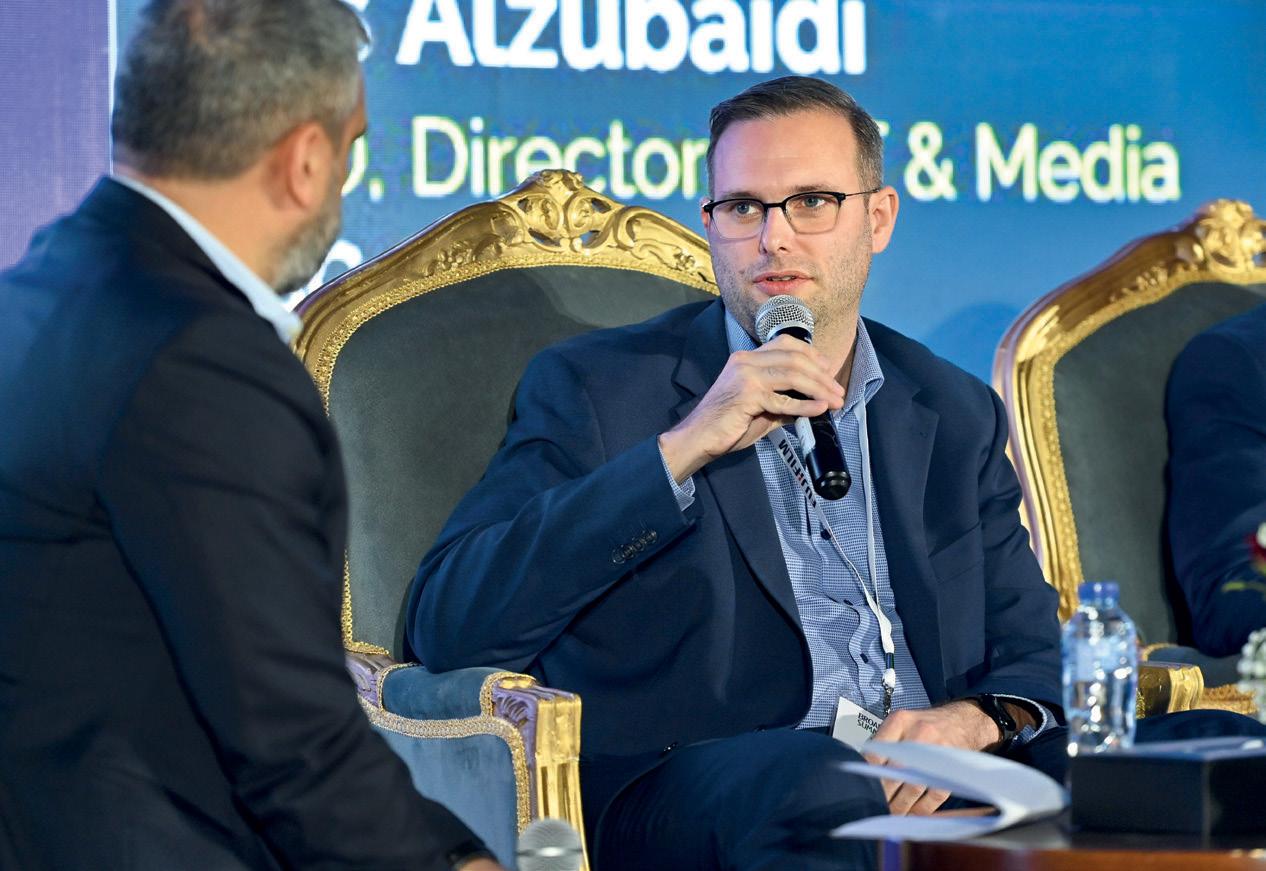
also makes the workflow faster.”
Although cloud storage is immensely popular in the West, it may not be ideal for MENA, according to Berenji. “The situation in our region is different. The bandwidth, number of tiers and connections available to main cloud services are limited in MENA. There’s also the question of cybersecurity – who will protect our data on the cloud.”
Here, Glänzel highlighted how one of the most crucial aspects of cybersecurity often gets overlooked by broadcasters or networks. “We put in several security measures on the tech side to keep content safe, but overlook the social engineering aspect of cybersecurity. We have to make users aware of how to deal with security breaches. The majority of the breaches are not due to a break in the firewall. They are human-based, so the social aspect is really important in this area.”
Alzubaidi conceded that the broadcast industry is falling short in the realm of cybersecurity. “We have not reached an adequate level of maturity in any aspect, whether it’s playout, automation, transmission
or video graphics. In contrast to the IT world, where our vendors can often address zero-day attacks and critical vulnerabilities within hours, it takes days or weeks for most media and broadcast vendors to provide substantial feedback. In case of such attacks, IT vendors are expected to close the gap within hours. In most cases, we have to chase vendors for days to get their approval to patch a live system that’s on air. This always makes us fall behind.”
During the panel discussion, it was emphasised that innovative approaches like micro-segmentation and artificial intelligence are essential for enhancing cybersecurity measures. Alzubaidi noted that the effectiveness of AI in advancing cybersecurity practices was transformational, particularly in its application to more frequent and dynamic security penetration testing and security validation. While traditional protocols may dictate annual assessments, the shift towards more regular evaluations can significantly strengthen security preparedness and incident response capabilities. Furthermore, the integration of AI into the management of hybrid Security Operations Centres (SOCs) and their associated processes was also underlined as a key strategy in maintaining robust security frameworks and augmenting the human output.
The Rudaw Network also uses AI to manage fake news and misinformation. Going beyond conventional use, it is using “AI against the fake news that was
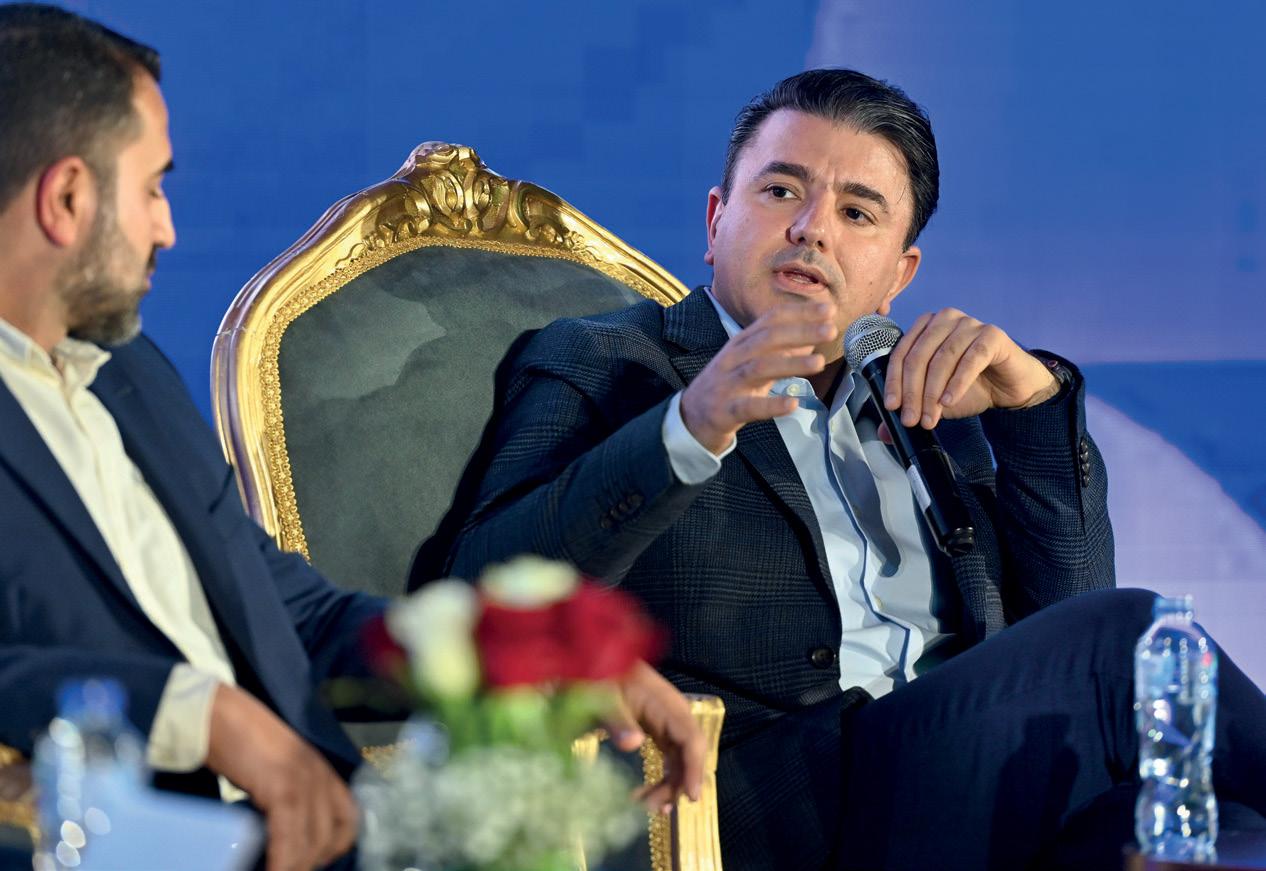
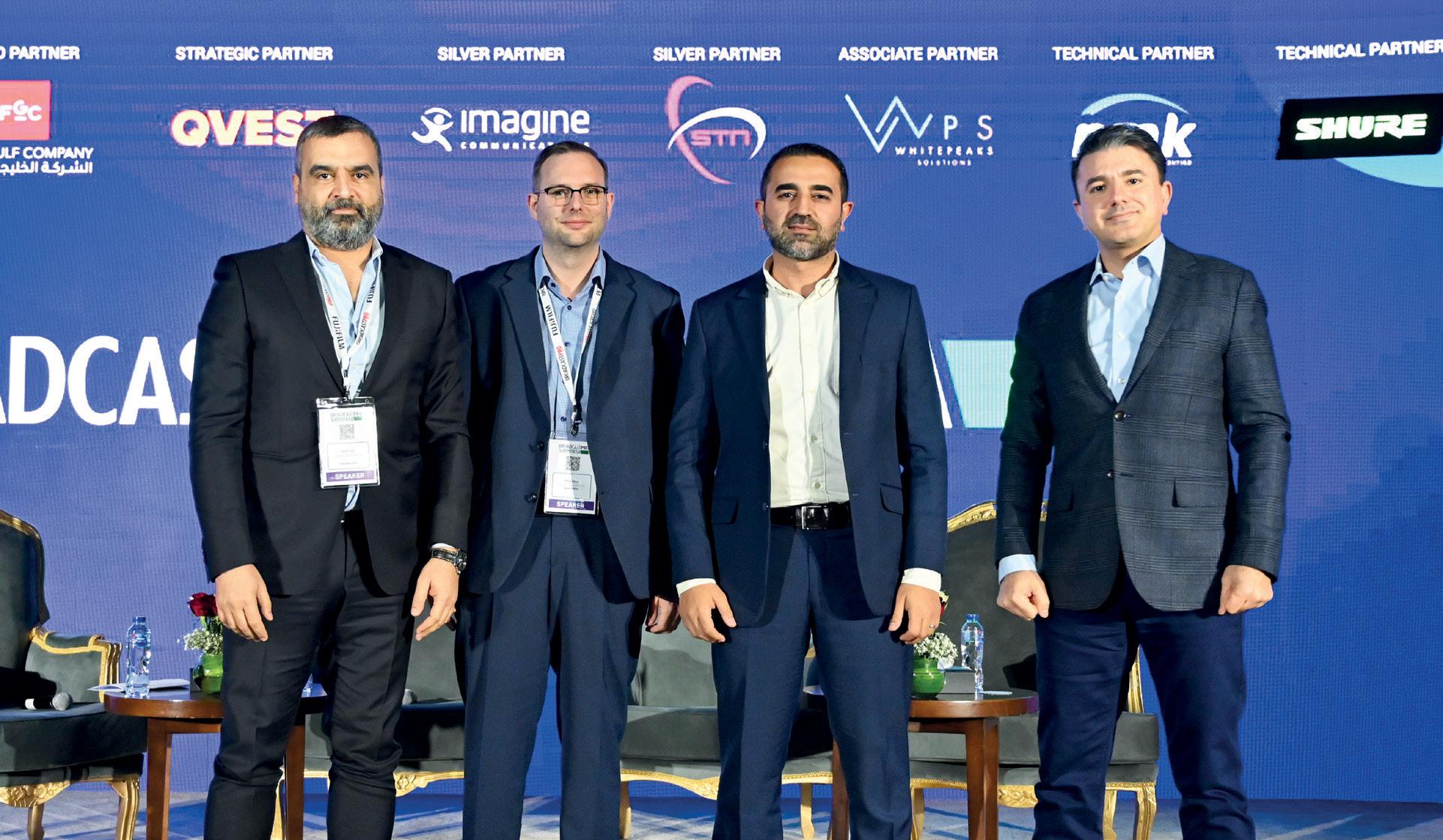
built by AI itself. We are not quite there yet, but we are moving towards it,” said Berenji.
However, a lot of work remains to be done when it comes to using AI to power newsfeeds and stay within editorial guidelines. “We are still trying to determine how to implement AI efficiently in editorial workflows, along with the right guidelines and approval processes,” said Glänzel.
Another factor gaining traction in the broadcast industry is sustainability. The panellists agreed that the broadcast industry is not doing enough in this regard. “We are not very mindful of how we deal with our computer resources, how big our data centres are, how much cooling capacity we put in and how that impacts the environment. There are many areas where we as an industry can improve and embrace the sustainability aspect better,” admitted Glänzel.
We are actively working with our partners and other stakeholders in the region to equip them with the knowledge and techniques that work for our region and audience. It’s high time we stopped imitating foreign brands
HEJAR BERENJI, CTO, RUDAW MEDIA NETWORK
Even after the active adoption of AI, ESG strategies and carbon offsetting programmes, balancing sustainability and operational efficiency remains a challenge for the industry. Alzubaidi cited the example of how leveraging generative AI for better visibility of production use cases consumes large amounts of energy: “While AI will remain at the top of our agenda, how we as leaders control the ethical elements of that transition will always be the question.”
As the panel discussion drew to a close, the panellists concurred that the future of broadcast in MENA was exciting. “We are on a mission to develop and deliver products that can shape the future of broadcast. Whether it’s combining AI with AR, VR or tech stacks, we are working towards a more sustainable, technologically advanced and creative broadcast landscape for the region,” concluded Berenji.
PRO2024 has all you need to know about the top players in the region’s broadcast and satellite market. A compilation of profiles of broadcast and satellite companies in the GCC, the hardback coffee table book is a valuable resource for not only business entities but also customers looking for a ready reckoner of key industry players.
Client: Ministry of Information
Location: Bahrain
Objective: To build a robust multichannel IP-based playout system
Systems integrator: First Gulf Company
Key suppliers: Arista, Grass Valley, Pebble, Harmonic, Vizrt, Plura, Trilogy, Lund Halsey, TSL

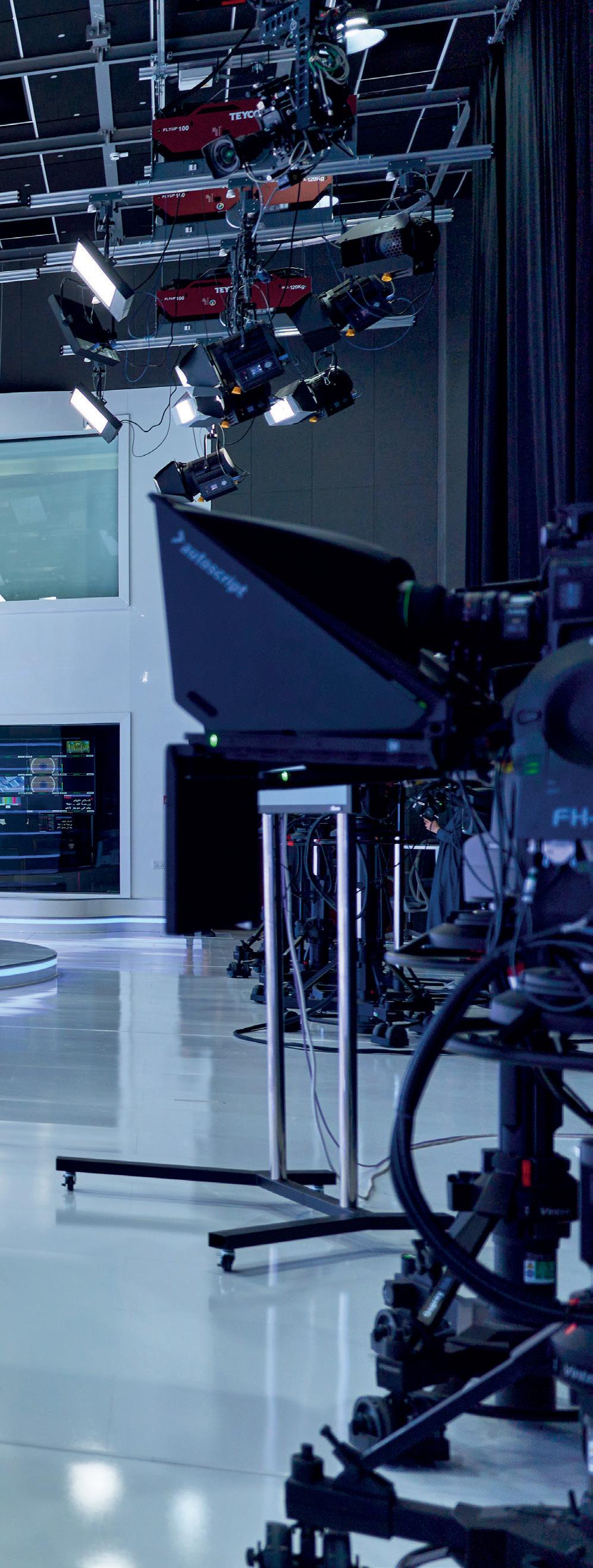


Bahrain’s Ministry of Information recently went live with an IP-based multi-channel playout system, setting a precedent as the first government entity in the GCC to implement the technology. In an exclusive interview with Vijaya Cherian, Eng Abdulla Ahmed Al Balooshi, Assistant Undersecretary of Technical Affairs, who spearheaded the initiative, and systems integrator First Gulf Company share more details
Bahrain’s Ministry of Information (MI) has been on an ambitious upgrade path over the last couple of years, replacing old infrastructure with cutting-edge technologies to forge a futureproof course. Its newest project, the migration to IP-based playout and SMPTE ST 2110, will enable Bahrain TV’s five channels to streamline their workflows and provide system flexibility to work in UHD and HD using the same infrastructure. The $4.5m project was designed and executed by Saudi systems integrator First Gulf Company (FGC), in conjunction with key broadcast vendors.
“Bahrain is always on the lookout for new technologies that will help it remain futureproof,” says Al Balooshi. “This is the future, as all the new media
now require an IP signal. In Bahrain TV, we use the same content but adapt them for our different platforms. So if your base is IP, this integration into new platforms is relatively easy. If you have a normal SDI or any older technology, you need to convert your signal, and that brings multiple challenges as you convert signals from platform to platform or from technology to technology and could potentially lead to loss of quality, especially on the graphics side.
“But IP also brings multiple challenges with it. Vendors often claim that they have a complete solution, but our journey has not been without its challenges. The technology is still relatively new even for the systems integrator. When integrating a lot of
different systems and products from different manufacturers and also having to work with some of your existing technology, it calls for thinking out of the box, collaborating more closely with all the partner vendors and coming up with solutions. I think that’s what makes this project rewarding.”
The main mandate for FGC was to create a UHD/HD multichannel playout facility that is futureproof, scalable, resilient, efficient in streamlining the playout workflow and flexible in choosing the transmission resolution format of the TV channels.
“To achieve the specified multicast flow redundancy, FGC adopted an IP network based on ST2022-7 with redundant streams of IP/RTP packets that allow for the creation of a single reconstructed output stream through hitless protection switching,” explains Joe Chbat, Executive Vice President, FGC.
The system has been designed for six playout channels, with each channel having its own chain consisting of Marina automation, main and backup playout and preview ports, Viz multichannel/ticker/engine, Masterpiece MCS, and video and audio monitoring.
The broadcast IP playout system comprises several key components for seamless operation. At its core is the Pebble Beach Marina automation system, boasting fully redundant device controllers, housekeepers and SQL servers to ensure uninterrupted performance. Supporting this infrastructure is the Harmonic Spectrum-X playout redundant server system, offering 10+10 playback ports and eight ingest ports compliant with ST-2110 and ST-2022-7 standards. Storage needs are met by the Harmonic Mediagrid-4000, providing 112TB of usable nearline storage.
Network management is facilitated by the Grass Valley GV Orbit dynamic IP
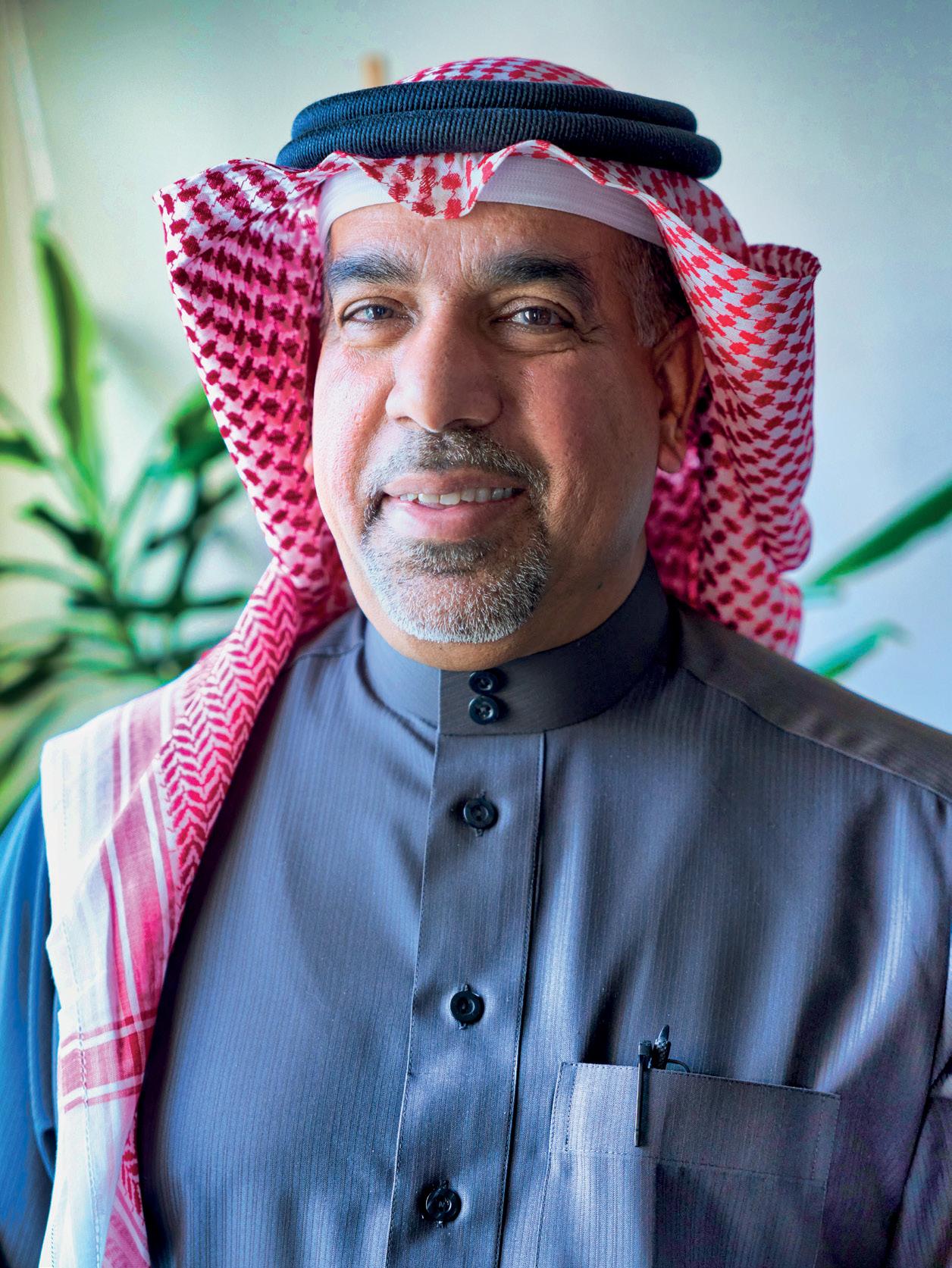
orchestrator, alongside the Arista 7280R3 switch boasting 96x100GbE QSFP ports. The system also incorporates Vizrt multichannel and ticker systems to efficiently manage content across six channels. Rounding out the setup are Grass Valley Masterpiece MCS, SDI<>Gateways and IP multiviewers MV-
821-IP for comprehensive monitoring and control capabilities. Together, these components form a robust broadcast solution tailored to meet the demands of a modern media environment.
I believe we have set a benchmark for broadcasting excellence in the region
ENG ABDULLA AHMED AL BALOOSHI, ASSISTANT UNDERSECRETARY OF TECHNICAL AFFAIRS, BAHRAIN TV
As part of its installation process, Bahrain TV migrated its Pebble Neptune system to the latest iteration of Pebble’s enterprise-level automation, enhancing its capabilities for robust multichannel delivery. The ST-2110 solution revolves around Pebble’s enterprise automation, which efficiently oversees both Pebble Integrated playout channels and third-party servers, mixers and routing devices within a unified system. This allows simultaneous playout of six channels, with control over six main and six backup server ports, six mixers and six CGs.
The ingest functionality can handle six simultaneous feeds per server, enabling parallel ingest to both main and backup servers. Furthermore, the
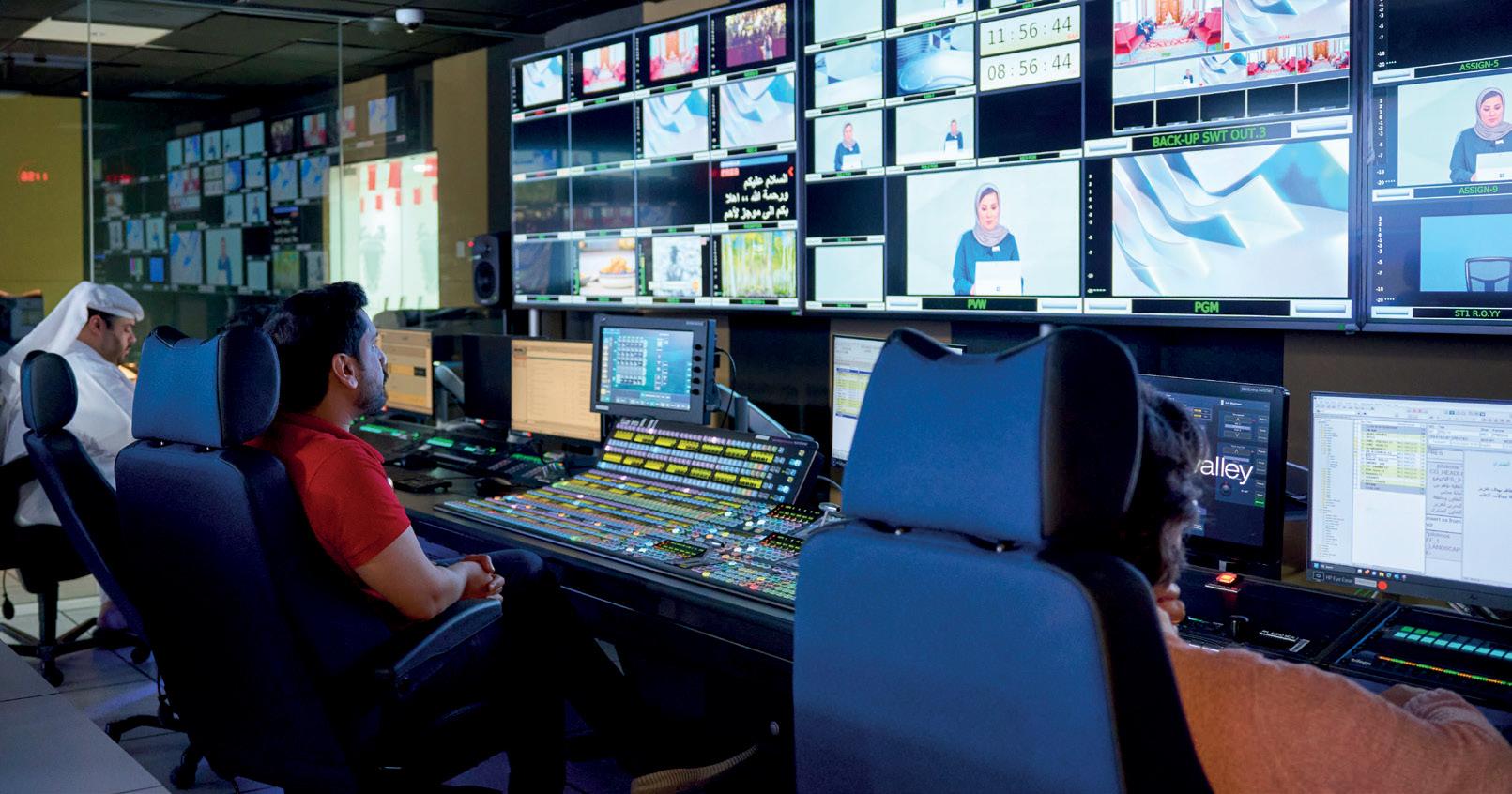
solution offers playlist preparation tools, a preview list and Junction preview capabilities. It also facilitates automated file transfers between video servers, nearline storage and the LTO archive, streamlining media movement. The Pebble systems were seamlessly integrated with top-tier components in Bahrain TV’s workflow, ensuring a smooth transition without disrupting viewer experience during the component swapping process.
One top-tier component worth mentioning is Vizrt Multichannel, which facilitates playlist updates and triggers on-air graphics, thereby simplifying playlist playout across multiple channels through a single client interface. It is the central control hub for managing standard graphics such as logos and now-next-later information across all six channels through a single interface.
API integration between Multichannel and Marina automation enables seamless communication. Page names are incorporated into the schedule as secondary events, along with the necessary data. Multichannel retrieves the playlist from the automation system. Secondary events are grouped within primary events within Multichannel.
Furthermore, through MSE

(Multichannel Scene Editor), Multichannel triggers graphics on the Viz Engine based on trigger information received from the automation system. While the automation system has complete control over Multichannel, operators at the Ministry also have the option to manually trigger graphics on the Viz Engine via Multichannel. The core network infrastructure has been deployed with a redundant ST2110 blue and red IP network architecture specifically designed to accommodate the capacity requirements of the UHD/ HD playout system’s future expansion.

This infrastructure is fully compliant with ST2022-7 path redundancy architecture, ensuring resilience and reliability. The backbone of this network infrastructure features Arista layer 3 non-blocking switches, providing a substantial bandwidth of 9.6Tbps. These switches are integrated with the GV Orbit control and orchestration system through API integration, streamlining network management and operations.
Arista 96-port 100G switches serve as core switches, capable of adapting to future spine and leaf topology configurations. Endpoints are directly connected to redundant core switches, forming the red and blue networks. Data aggregation Arista PTP-aware leaf switches are employed for management, control and grandmaster clocks, further enhancing redundancy and reliability.
Network synchronisation is ensured by two GPS-locked PTP grandmasters from Telestream, using the best master clock algorithm. Arista switches configured as boundary clocks ensure precise synchronisation with end points. Network orchestration is managed by GV Orbit through API integration with Arista switches and IS-04/IS-05 protocols, facilitating seamless data flow orchestration to third-party endpoints.
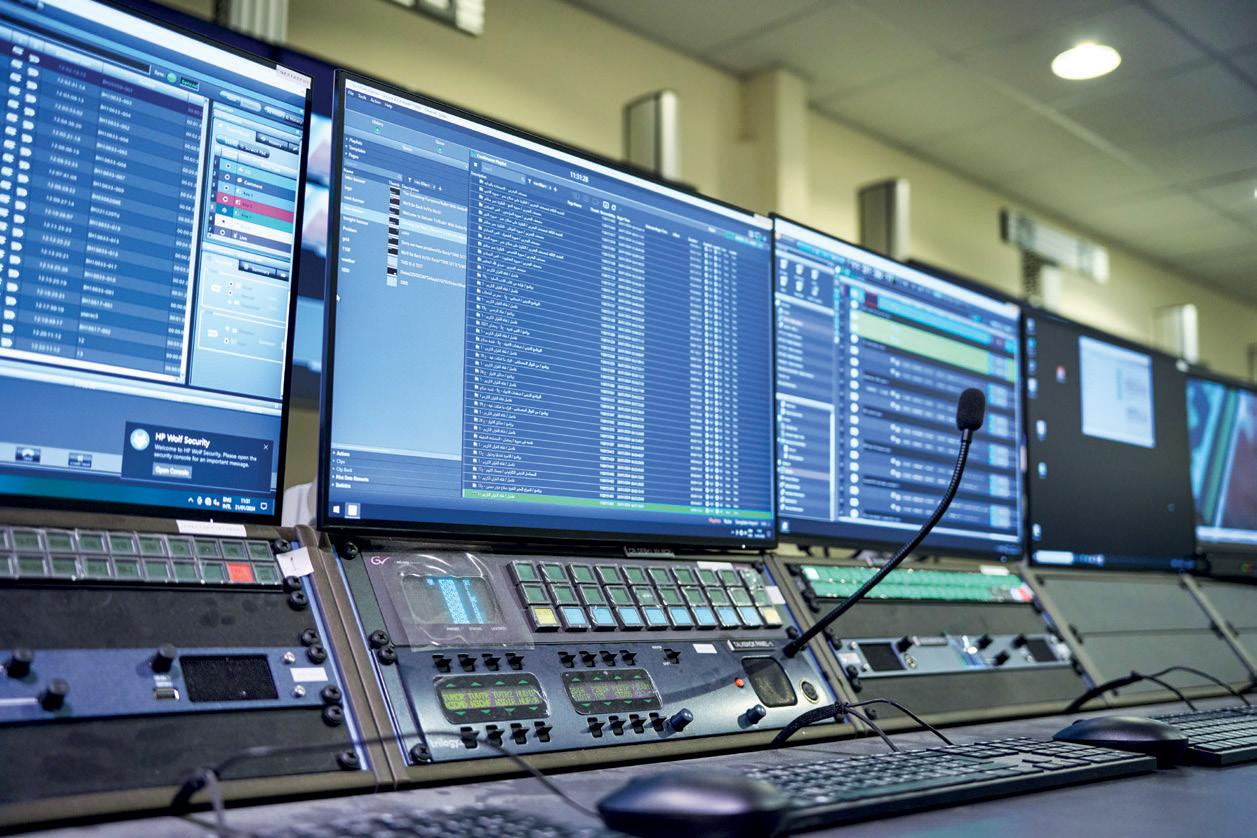
To support media-related operations, a separate media network is provided, featuring HP Aruba 5400 switches dedicated to playout servers, Media Grid storage, graphics and other production devices. This segregation optimises network performance and resource allocation.
Redundancy and failover management in the IP-based playout system has two levels: component and path redundancy. Component redundancy mirrors traditional SDI systems, duplicating critical components to ensure system resilience in the event of device failure. The system also leverages hitless protection switching technology (ST2022-7) for path redundancy. This approach involves sending two multicast streams from one endpoint to two separate networks (red and blue), mitigating signal disruption in case of network congestion issues.
Integration of the IP-based playout system with existing broadcast equipment and workflows involves IP gateways that facilitate the conversion of SDI signals to IP and vice versa, enabling seamless interoperability. A total of 128 inputs and outputs connect the ministry’s existing main SDI routing
matrix and IP gateways. Once signals are converted to multicast IP streams, they become accessible as sources for any channels, supporting live or ingest applications. Furthermore, all six playout channels’ programme outputs are available in SDI format for distribution and transmission, ensuring compatibility with existing workflows and equipment.
One of the big challenges in terms of compatibility and interoperability was the communication protocol between devices. The ministry’s 2110 IP playout
system boasts advanced monitoring capabilities, ensuring superior QoS levels and precise synchronisation of IP/RTP data streams. “We had to make sure that the implementation of communication protocol subsets was consistent across both devices, even if they share the same primary communication protocol, to ensure proper communication functionality,” says Orlando Castro, Chief Technology Officer, FGC.
Chbat explains: “FGC and our technology partners were particularly focused on the design and deployment of the system synchronisation compliant with SMPTE 2059, which is considered the heartbeat of any ST2110 installation.
Redundant Precision Time Protocol (PTP) grandmaster clocks locked to GPS signals that are configured to work on best master clock algorithm (BMCA) were implemented in the design of the media network architecture. To avoid system timing issues, we also deployed a proper PTP design to ensure precise synchronisation of the various IP/RTP data streams in an ST 2110 system. As a result, we have achieved error-free 2110 streams with almost no latency.”
Balooshi adds: “Currently, with six fully redundant playout channels, less


than 30% of the switching capacity of the core switch is being utilised. The playout system is scalable by simply adding SFPs to the unused 100G ports of the core switches for future expansion.”
For future upgrades, pathways and strategies are being developed for the advancement of the IP-based playout technology. To fully realise the ST2110 deployment, it is imperative that the security layer of the standard be finalised by SMPTE and subsequently applied as an upgrade to the recently deployed ST2110 infrastructure. At present, SMPTE has not concluded the security aspect of the ST2110 standard. In the interim, network isolation measures are being implemented to fortify the infrastructure’s security.
“With the new solution, workflow efficiency at the ministry has improved. All receiving endpoints have access to a central router and can be managed, monitored and controlled from a single orchestration and management
system,” remarks Orlando, adding that the deployment of new technology inevitably presents challenges that were not anticipated during the design phase.
“At the physical layer, establishing a reliable fibre cabling network for ST2110 infrastructure presented challenges, particularly in handling high-bandwidth streams. The FGC integration team executed precise fibre termination to accommodate multi-lane 100G QSFP ports, requiring specialised skills in fibre cable management and testing. Transitioning to the orchestration layer, the system orchestrator had to abstract the network accurately and ensure effective communication with third-party playout controllers. Thorough testing of communication protocols helped mitigate compatibility issues, with FGC’s expertise in studio infrastructure and IP deployment facilitating successful navigation of deployment challenges.”
Balooshi, who has overseen the ministry’s broadcast projects for years, says it has a ten-year plan. He concludes:
“We just finished our radio setup a few months ago. We have a brand-new news studio with all 4K equipment. Now that the IP playout system is done, we have a few more upgrades in the pipeline. Upgrade of the RF part of the earth station is one of our pending tasks. Bahrain is a high-profile venue for many of the world’s premium sports events, so we have two new OBs planned. In the meantime, we have an archive project that has been awarded to a systems integrator. We are in the process of finalising the design for that one. This will eventually be integrated with our IP-based playout. More importantly, a lot of government media entities have been waiting to see how our IP project pans out to start their own. I believe we have set a benchmark for broadcasting excellence in the region.”
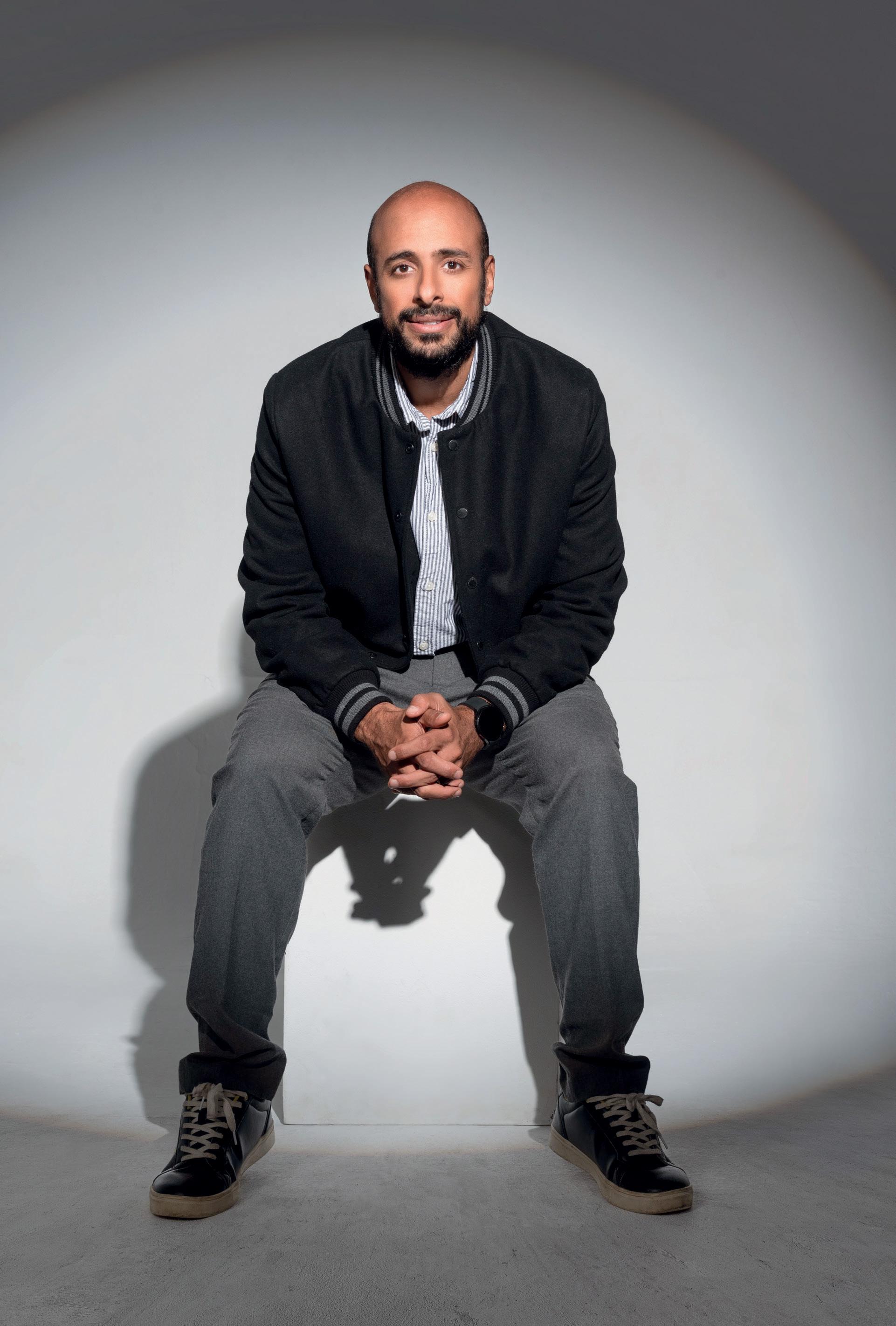
Making waves in the digital drama scene, Egyptian filmmaker Tarek Nasr, the creative force behind hits like The Giza Killer on Shahid, opens up to BroadcastPro ME about his content journey, the challenges of staying relevant in a rapidly changing digital landscape and what lies ahead
For over three years, Egyptian filmmaker and producer Tarek Nasr and his team delved into the deep, dark, grisly world of Gaddafi Farag, meticulously researching and sifting through his background to understand what had made the soft-spoken, religious Egyptian turn into the ‘Butcher of Giza’. Nasr then crafted the real-life tale of the horrific psyche behind Farag’s gentle facade, how after careful planning he executed his close friends and family, and how time after time he evaded the authorities.
Within a week of the series’ release in summer last year, Safah El Giza (The Giza Killer) kept viewers glued to their screens, gripping an entire nation and the region. The eightpart mini-series, which chronicled the most notorious serial killer in modern Arab history, was the most-watched on Shahid, MBC’s regional streaming platform.
Arrested in 2020, Gaddafi Farag was masterfully portrayed by Ahmed Fahmy, popularly known for his comedic roles. The series also starred Rakeen Saad and Basem Samrah, among other well-known contemporaries.
“It was among the most successful Shahid Originals ever,” says Nasr, the
mastermind behind the queasy saga. “I worked on this for a few years and took a lot of the learnings from my previous experience producing and creating content online. Working on online shows means it’s a small team, you get a chance to work on everything yourself, and when you expand the team and your production, you have a decent understanding of how everything works individually.”
From a creative standpoint, Nasr had a team of young, up-and-coming writers exploring the genre. Of all the stories made available, Farag’s seemed the most promising in terms of narrating a story that was true. Creating a script about a serial killer inspired by true events is a rare regional undertaking, only previously seen with Rashash, and took them “roughly two-and-a-half years”.
“We liked the aspect of the killer as an everyday person, as someone you meet in the supermarket,” says Nasr.
I’m lucky I come from Egypt, where we have been able to make movies and films that can be identified with the masses TAREK NASR, FILMMAKER
To this day, Farag’s neighbourhood reels in shock and disbelief at the gruesome murders he committed. They saw him pray, get medicine and groceries for neighbours and look after his mother. They couldn’t believe the killing stemmed from his hatred of the way his mother treated him.
“It was a crazy situation, and I couldn’t understand the reasoning behind the ghastly mindset. We brought in a psychiatrist to help us comprehend the thought process behind the evil. Somewhere in the killer’s conscience he believed he had caused his mother pain, and so took all her reproach and criticism. The killings may have been a depraved way of getting back at her.”
Before launching The Planet Studios, a regional media studio that creates, produces and distributes filmed entertainment. Nasr’s first foray into filmmaking was an online web series way back in 2012.
“When we started producing online content over ten years ago we started off with a few bad online series initially, but soon after we were able to create a few hits with a strong regional following online. Then streaming platforms emerged in the region and we began to shift our focus.
“We produced SNL-like comedy sketch shows including Salizon for YouTube, Shahid, Viu and OSN, and then Shakeb Rakeb for Al Hayat TV, and the content did really well. At that point we decided to start a company focused purely on premium content, films and series, and that was how The Planet Studios was launched in 2019.
We liked the aspect of the killer as an everyday person, as someone you meet in the supermarket TAREK NASR, FILMMAKER
The Giza Killer was a good start to where we want to go – to be doing content that is authentic and local, but can travel. The Turks and the Indians are much better than us Arabs at exporting content. Indian content goes everywhere, it was a big sub-culture in Egypt in the ‘80s and ‘90s, it was mainstream, there was always a Bollywood film playing in the cinemas, and the big stars of the time are known to this day. Indians do a better job at exporting content, and I want to do that with Arabic content.”
Nasr is working closely with streaming platforms to create quality content and has a few deals under wraps. “We are trying to balance, not taking too much on so we can focus on producing good-quality work. I don’t want to be pushing out four or five series a year that are not up to the standard; that would be a disaster.”
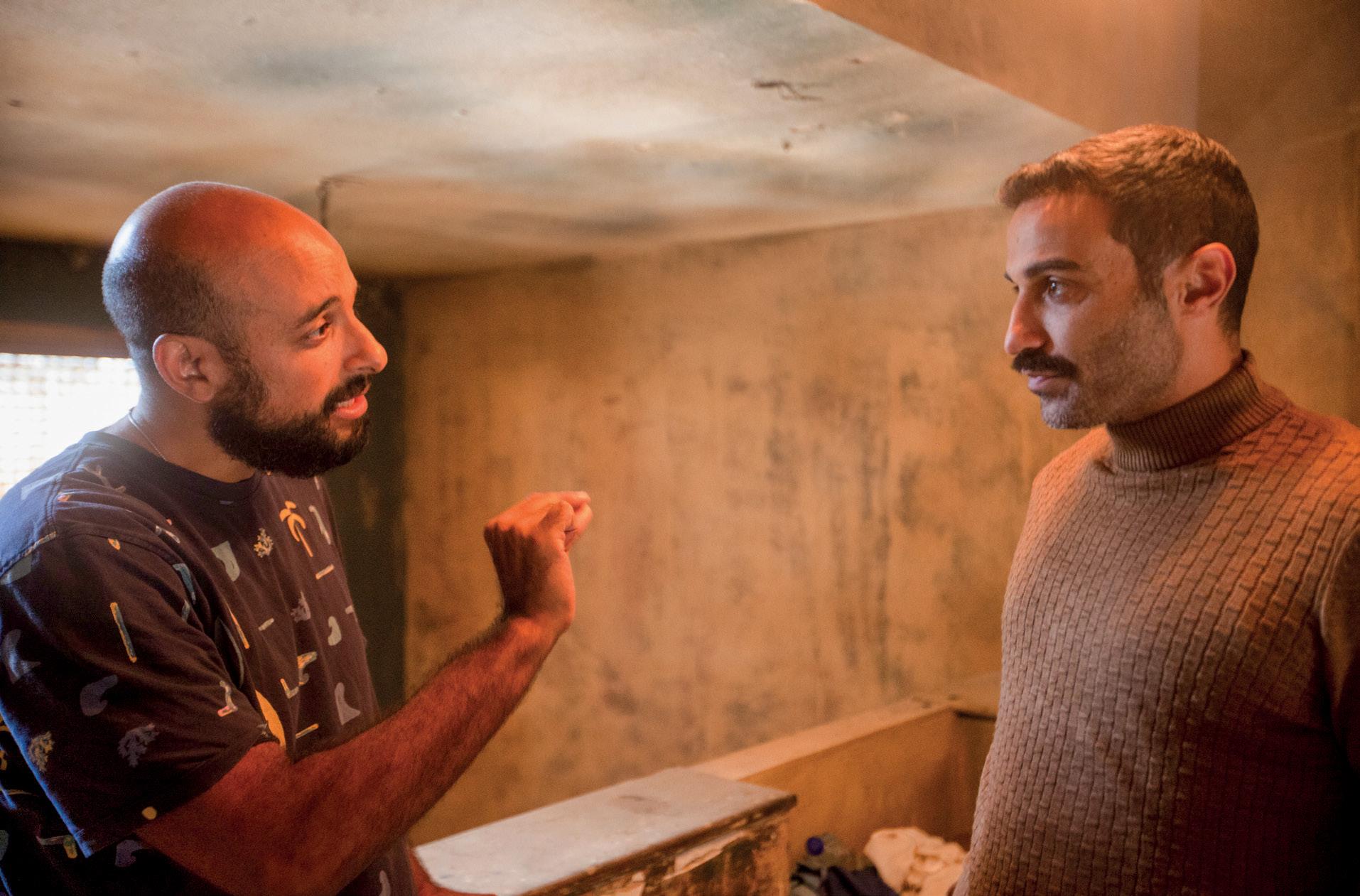
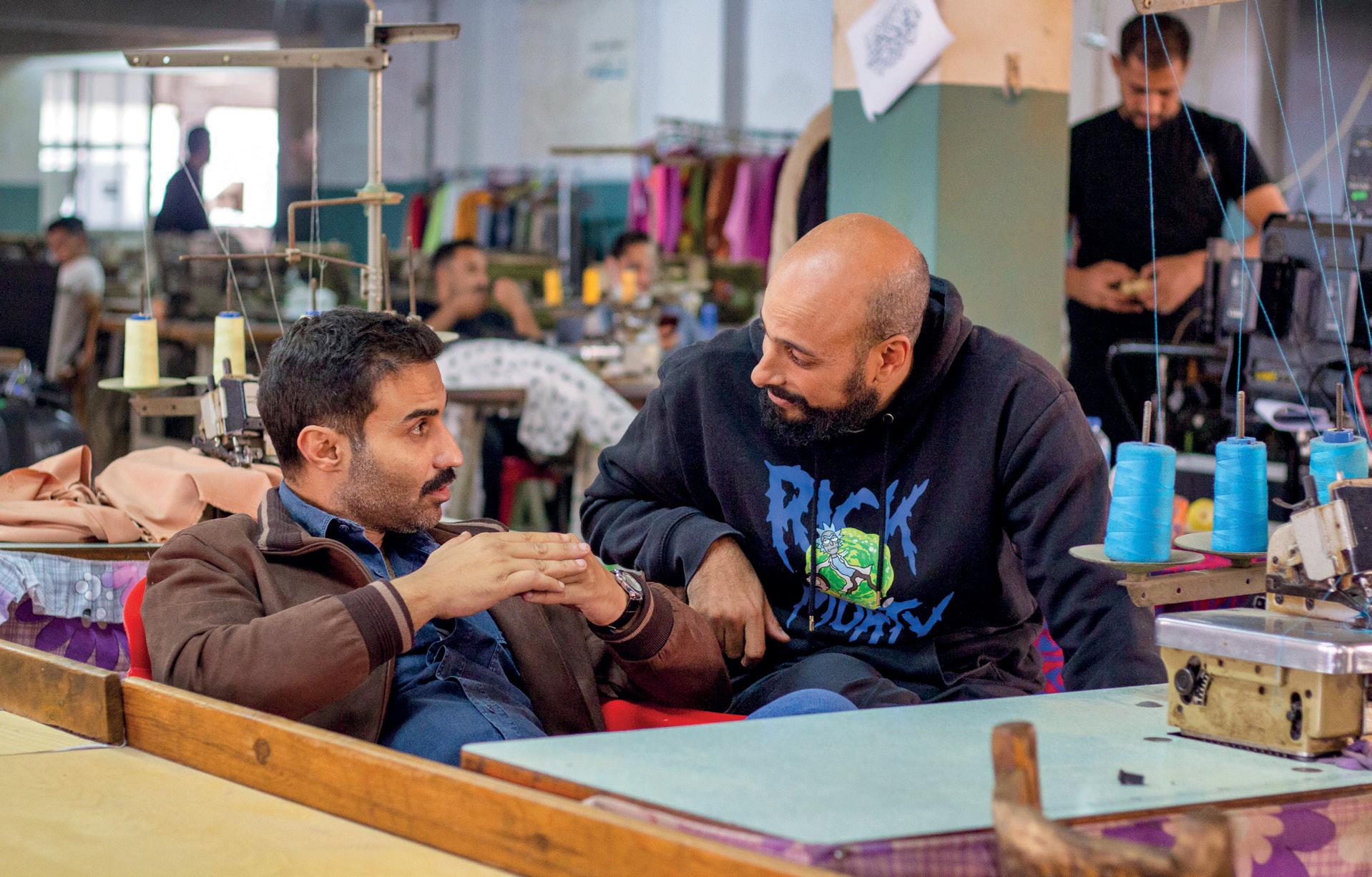
Creating good content that’s commercially viable is relevant in terms of managing finances. “The Giza Killer was a high-budget production. There were 200 people on set and we learned that each one had a micro role to play. If you look at premium long-form productions in Europe or the US, it’s a smaller team working than it is in Egypt or the Middle East. Some working styles are inherent to the region and I didn’t want to break that cycle on my very first production, but we will work with less for the next.”
Whether selling a series as an acquisition or working on originals, most platforms work in the same manner, where the creator agrees to sell a concept and is commissioned to produce it. Financially, the originals are a good starting point, but for any production company a mix is good, says Nasr – a few originals, a few series that are acquisitions and a few films.
Coming from an industry that represents a significant slice of Arab cinema, creative endeavours are backed in the real sense of the term, says Nasr: “I’m lucky I come from Egypt, where we have been able to make movies and films that can be identified with the masses.”
He and his team have just completed shooting on their first film, The Search for the White Dress, co-produced with Egyptian film production house Film Clinic and helmed by the renowned Mohamed Hefzy.
“We work as partners, we share the same level of commitment, creative freedom and understanding. He’s great to work with; we share the same understanding.”
Moving forward, Nasr is working on a co-production with Egypt’s Synergy Films, among other projects with streaming platforms. He feels the big challenge in feature films today is to find good creatives and a pool of fresh
talent that is looking to experiment and craft new content: “We transitioned a lot of people from the social media and online world to long-form content, and it was the best decision we made.”
With Egyptian films doing well at the box office, getting the right actor to headline a project is equally important.
“Egypt sees a change of guard in terms of stars and celebrities every 10 or 15 years, and this is where Saudi Arabia is different. They are new so they don’t have many historical stars like we do in Egypt; they can start afresh, which is relevant because we talked earlier about having something local and authentic. Platforms these days are giving opportunities to younger producers like us to take that chance, to crack into the market and to take that shot. Streaming platforms have particularly helped us evolve. And a new generation of motivated filmmakers is ready to break new ground and help keep the industry growing.”
The inaugural BroadcastPro KSA summit brought together regional experts to take a closer look at personalised content strategies, diverse monetisation models and cutting-edge technologies driving the OTT landscape in the MENA region
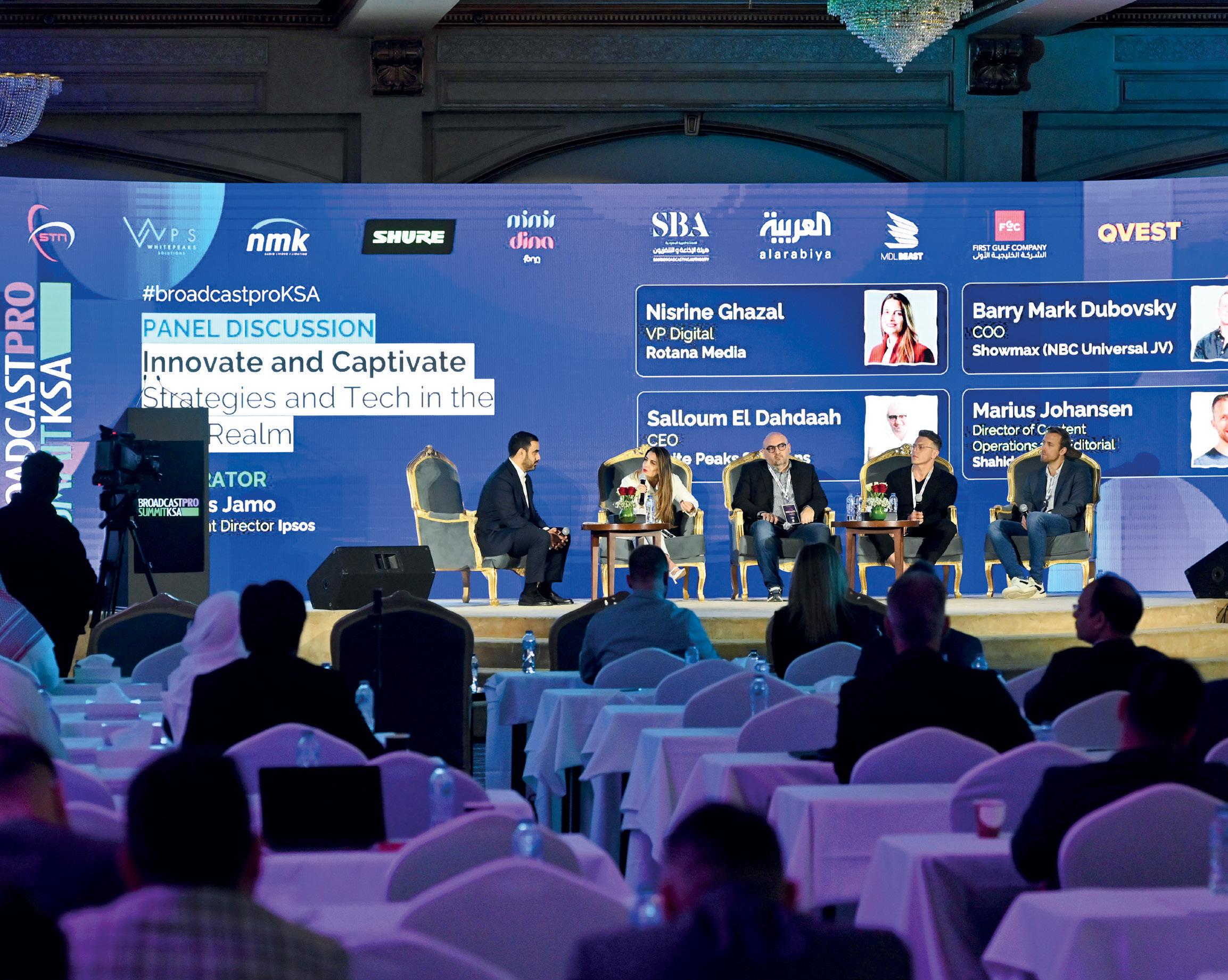

Titled ‘Innovate and Captivate: Strategies and Tech in the OTT Realm’, the OTT panel comprised Nisrine Ghazal, Rotana Media VP Digital and CEO of AdArabia; White Peaks Solutions
CEO Salloum El Dahdaah; Barry Mark Dubovsky, Showmax Executive; and Marius Johansen, Director of Content Operations and Editorial, Shahid. The panel was moderated by Athanos Jamo, Chief Client Director at Ipsos.
Setting the tone for the discussion, Jamo invited Nisrine Ghazal to summarise the emerging trends in the industry. FAST topped the list.
region. Exemplifying this is Showmax, the largest OTT SVOD platform in Africa. The homegrown platform has overtaken Netflix in the African continent according to a report by Omdia Research. As of November 2022, Showmax claimed 39% of the African market compared to Netflix’s 33.5%.


“FAST has been a topic that’s relevant to everyone, from broadcasters and distributors to audiences. Right from content creation and distribution to monetisation, FAST has become a critical factor in all these verticals,” she said.
Ghazal also pointed to the rapid growth in CTV, with the medium emerging as the fastest-growing media channel in terms of ad spend. With 46.6% growth during the period 20212023, CTV was the fastest growing in Europe according to a report by IAB MENA. eMarketer forecasts that CTV will grow by 41% in the 2023-2024 period. CTV is trending not only in Europe but is also catching up regionally, she noted.
Next on Ghazal’s list were consolidations and partnerships. “Consolidations are important because advertisers are now looking at volume, and broadcasters cannot deliver that volume at scale with just their inventory. This is pushing broadcasters and OTT platforms to become ‘frenemies’ where broadcasters can merge their inventory on one platform to address the needs of advertisers through a single access point,” she said.
According to Ghazal, SVOD, SVOD Lite, AVOD and AI are other trends that will impact revenue generation, audience engagement, and retention and subscription models in the
Tailoring content and its delivery to user preferences Dubovsky attributed this success to the platform’s content and localisation strategies. “This is a theme that resonates very strongly with Showmax. Local content is the driving force across the Sub-Saharan African territories we operate in. But the localisation extends beyond content. We have localised accessibility, personalisation, payment channels and even distribution partnerships. These are the elements that set us apart and are essentially part of the secret sauce,” he explained.
Johansen agreed. Emphasising Shahid’s strong positioning in MENA to capitalise on the local market, he said: “One benefit Shahid has is the relatively large free-to-view options from MBC. We get a lot of content from those channels that we leverage on our platform.”
However, El Dahdaah from White Peaks Solutions opined that the starting
point for differentiation isn’t content. “It starts from your target – what do you want to achieve with your platform? Do you want to monetise it? Or do you want ads? Once you set the target, then define the audience, start acquiring or producing content that can serve this audience and factor in a robust technology to drive everything you are doing. This how OTT platforms can grow,” he said.
Whichever approach to content is chosen, ultimately localising content remains a critical element. The hyper localisation in MENA, ranging from content creation to distribution and monetisation, has led to the emergence of a unique complementarity between OTT platforms and traditional linear broadcasting. According to Johansen, this complementarity offers huge benefits for broadcasters.
“The arrangement allows us to offer different viewing options to different audiences. People who have a preference to watch free-to-view content on linear TV can keep doing that. Meanwhile, the digital and SVOD platforms will allow viewers to subscribe and gain access to premium content, and then they can get additional free content on linear TV,” he elaborated.
Diverse monetisation models
A major issue with OTT is that everyone sits in silos. The information isn’t democratised BARRY MARK DUBOVSKY, SHOWMAX EXECUTIVE
Complementarity allows broadcasters to optimise their investment in content. In Johansen’s words, “Broadcasters can buy content for a particular service, such as linear TV or SVOD, and then spread that across multiple platforms. This benefits viewers too as content can be shifted across various platforms.”
Ghazal added: “If broadcasters can convert their channels from linear to digital or analogue to digital, then they can monetise through connected TVs, ad servers and demand partners.”
Complementarity is also proof that linear TV is not declining. Ghazal

highlighted Ipsos’ weekly reports on audience behaviour that record an average viewing time of five hours and 46 minutes of linear TV in KSA. Similarly, research firms such as GWI, eMarketer and Statista report an average viewing time of three to six hours.
Despite this, broadcasters on linear TV haven’t been able to attract advertisers. Ghazal believes this is due to the platform’s inability to offer advertisers targeted marketing and precise performance measurements. She further noted how this is just a regional drawback. “Europe solved this issue in 2011 with the introduction of HbbTV. They embedded HbbTV signals in their broadcast satellite feeds to any connected TV device as well as ad servers. HbbTV has arrived in the region through Adarabia’s marketplace and broadcasters can now transform their analogue satellite channels to digital through this technology and monetise it through Adarabia.”
It’s worth noting that performance measurement is a stumbling block with OTT platforms as well. As Dubovsky noted, “A major issue with OTT is that everyone sits in silos. The information isn’t democratised, especially for content creators and vendors. So they don’t

get a sense of how much value they are adding to the business.” However, things are changing, especially since Netflix started publishing its numbers.
The panellists collectively agreed that transparency is key for the survival of OTTs moving forward. “Transparency is the future. Currently, one of the greatest deterrents for advertisers is a lack of precision. We have to provide the metrics that will enable them to justify ad spend and increase it on certain platforms versus others,” stressed Ghazal.
Furthermore, as broadcasters and advertisers seek to personalise content delivery, they also need to focus on privacy regulations. “Harvesting user data isn’t permissible and no viewer will accept it. At the most, broadcasters or OTT platforms can make use of simple surveys or questionnaires to determine viewing preferences, and even allow the creation of personal IDs on their platforms,” El Dahdaah noted.
Another challenge broadcasters and streaming platforms face is striking a balance between customer satisfaction and revenue generation. In this regard, Dubovsky emphasised the necessity to transact with customers on their terms. He noted how Showmax has doubled down on its existing retail network to

find “every single way that a potential customer is willing to transact with them and become a subscriber”. Given that most of its customer base has very low disposable income, the company had to devise innovative ways to appeal to the mass segment. “We had to find ways of reducing the cost for a customer to come onboard. For instance, we targeted Africa’s mom-andpop stores that have been around for decades to offer customers discounts on subscription packages,” he said. Showmax was able to reduce its

customer acquisition cost by over 50% while improving the overall customer satisfaction. Dubovsky credited this to “being micro segmented around the company’s customer base and shifting spend from paid to organic channels”. He highlighted how the shift, backed by a strong social media presence, has been one of the most successful commercial strategies the company has implemented. He also spoke favourably about the use of AVOD in bringing down viewing costs for customers.
In the same vein, Shahid has ensured that it is accessible to a wide range of viewers. A majority of the platform’s content is free. “At Shahid, we keep the monetisation model relatively simple. We have an AVOD proposition where people can enjoy our content for free, even some of the premium content; for instance the first episode of an original. Viewers can get a sense of the piece of content and then subscribe to it. Viewers are quite happy with this option and we see a lot of conversion here,” explained Johansen. He also noted the availability of FAST channels and live channels on Shahid.
At the Rotana Group, CTV is the chosen model for revenue growth, given its rising popularity in the region. “IAB MENA has a task force specifically for CTV that includes people from media

Consolidations are important because advertisers are now looking at volume, and broadcasters cannot deliver that volume at scale with just their inventory
NISRINE GHAZAL, ROTANA MEDIA VP DIGITAL AND CEO OF ADARABIA
agencies, tech companies, broadcasters and suppliers. Everyone is focusing on CTV and this is also evident in the numbers in Zenith Ad Expenditure Report for this region, which forecasts that nearly half a billion dollars will be spent on CTV,” Ghazal commented.
“That is a significant amount, but we have to remember that 78% of digital is taken by Google and Meta through channels such as YouTube. That means 78% of the income doesn’t get redistributed in the region, it won’t be taxed by our governments and will leave our region. It’s imperative that we now urge our governments to get involved
and put policies in place so that when we do look at whatever is left from that 78%, we’re not fighting each other on that. We’re growing the pie and growing our share of ad expenditure,” she exhorted.
As FAST channels gain popularity across MENA, content delivery networks (CDNs) are also evolving to accommodate the increasing demand for live streaming and real-time content delivery. “With FAST channels, the technical part of content preparation is very important. White Peaks has been working on a technical model whereby broadcasters or content owners can launch thousands of channels without using any CPUs that are transcoded. It also allows them to create unlimited channels and combine videos. This lowers costs significantly and allows platforms to leverage their content,” noted El Dahdaah.
As the discussion drew to a close, El Dahdaah emphasised the need for stringent laws to uphold the security and integrity of content delivery. While DRM and tokenisation are available, they are not enough. “There has to be a more robust legal framework. Content theft can be curbed only if it is deemed a crime globally.”
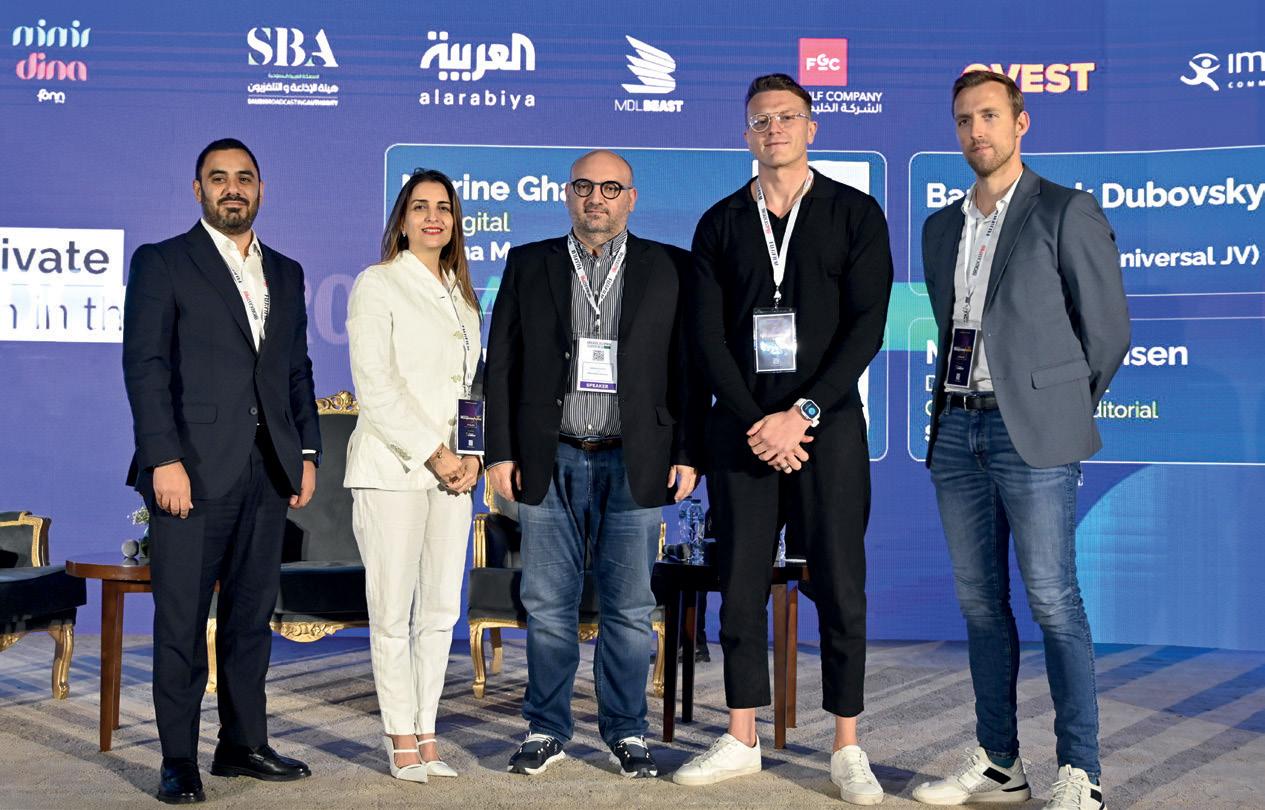
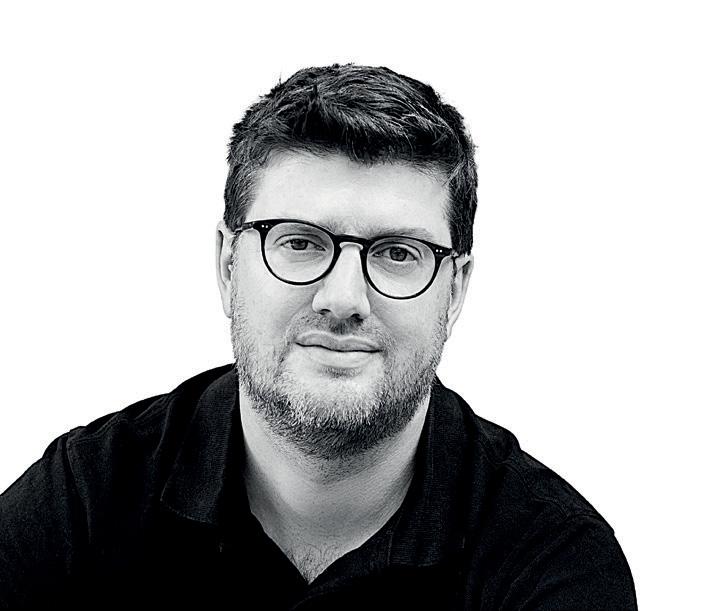 FREDERIC PETITPONT
FREDERIC PETITPONT
The bias of AI datasets affects how stories are told and how cultural narratives are conveyed by broadcasters and media
Today, multimodal and generative AI shapes how media companies tell stories, enabling them to share more compelling narratives. Through this next-gen AI, media companies can describe what is in audiovisual media, enabling quick and relevant content searches. Yet one of the challenges with using AI for video indexing is that the datasets do not reflect the diversity of the world. Most datasets are created in Western countries and in English, regardless of the actual distribution of language speakers worldwide.
On Hugging Face, more than 65% of the world’s datasets are in English and less than 4% are in Arabic. The percentage of English to Arabic datasets is vastly disproportionate, given that 400m people around the world use English as their native language and 370m speak Arabic. This discrepancy arises from several factors. English serves as a universal language for research and communication, influencing dataset creation. Moreover, market size drives language-related efforts and quality, impacting aspects such as transcription accuracy.
The bias of AI datasets affects how stories are told and how cultural narratives are conveyed by broadcasters and media companies. For example,
a shot of a man wearing a kufiya or keffiyeh may be incorrectly detected and described by AI as a hijab. This is termed a hallucination, the result of the AI being trained on data that contained limited or no examples of hijabs and keffiyehs, so it lacked knowledge of this Middle Eastern clothing and who it is worn by. To address this, it is important to continuously add cultural information from diverse sources to existing datasets.
One solution is prompt engineering. This involves adjusting search prompts to achieve better suggestions. Asking Midjourney for a picture of a researcher making a discovery will likely produce four different propositions of a Caucasian male in his 40s in a white shirt or lab coat. Adjusting the prompt and suggesting other cultures and genders will improve the diversity of the search results. Google Gemini attempted to address this but faced drawbacks, including inaccuracies in some historical image generation depictions.
Another option is fine-tuning the model. This means adapting an existing model for a specific task. Instead of retraining a new model
from scratch, extra data is added to the base model. This can be very efficient, but to be effective AI engineers and business experts must work together to provide real-world use cases and the necessary data. .
Applying a multimodal approach (i.e., multiple sensory modalities) to AI further improves video indexing results and can reduce the likelihood or frequency of some AI hallucinations. Rather than relying on a single source for indexing, multimodal AI takes into account numerous sources, such as objects, context, geo-location, text, facial recognition, Wiki data, brand logos and other visual patterns, transcriptions and translations. Utilising collective memories, personal learnings, hearing and the notion of space and time, metadata applied through multimodal AI indexing leads users to the exact moment and gives them the precise context they need.
Over the long term, sharing additional data with the open source community and promoting diversity among research teams will go a long way toward directly impacting cultural representation.
FREDERIC PETITPONT IS COFOUNDER & CTO OF MOMENTS LAB





